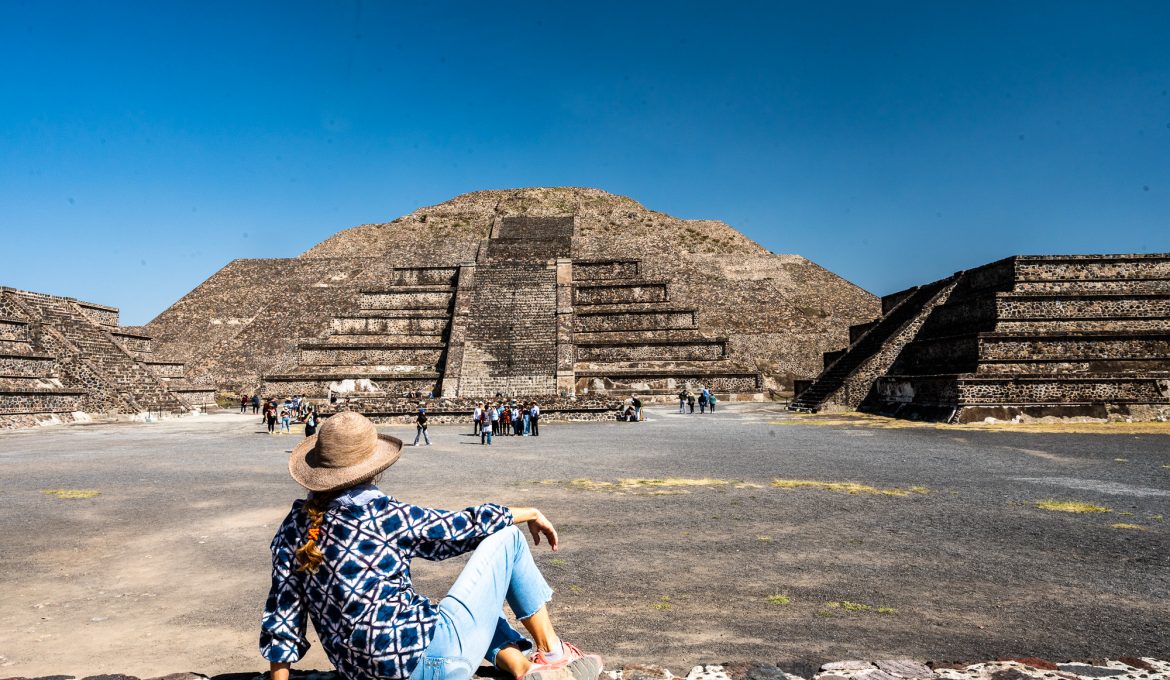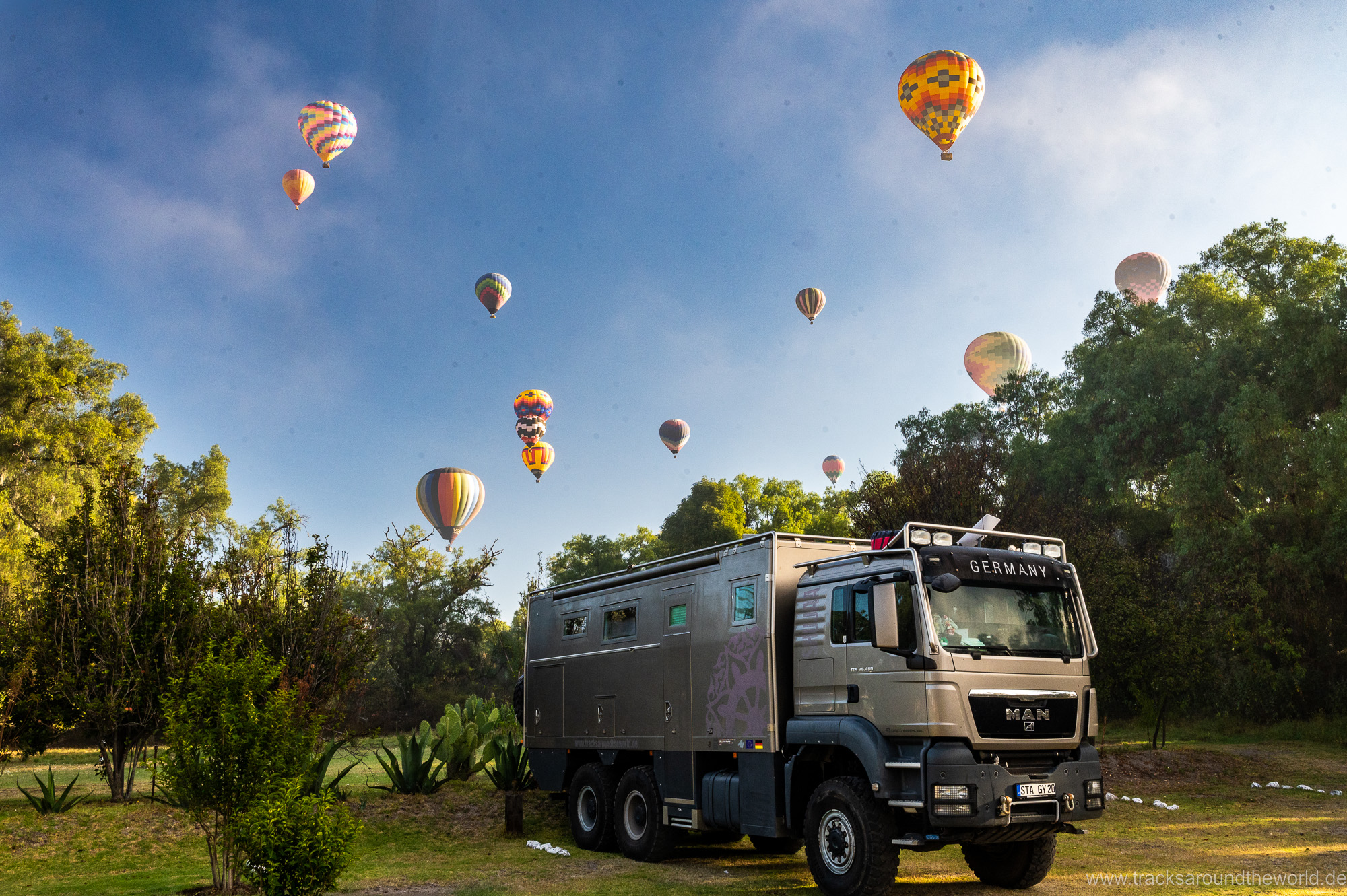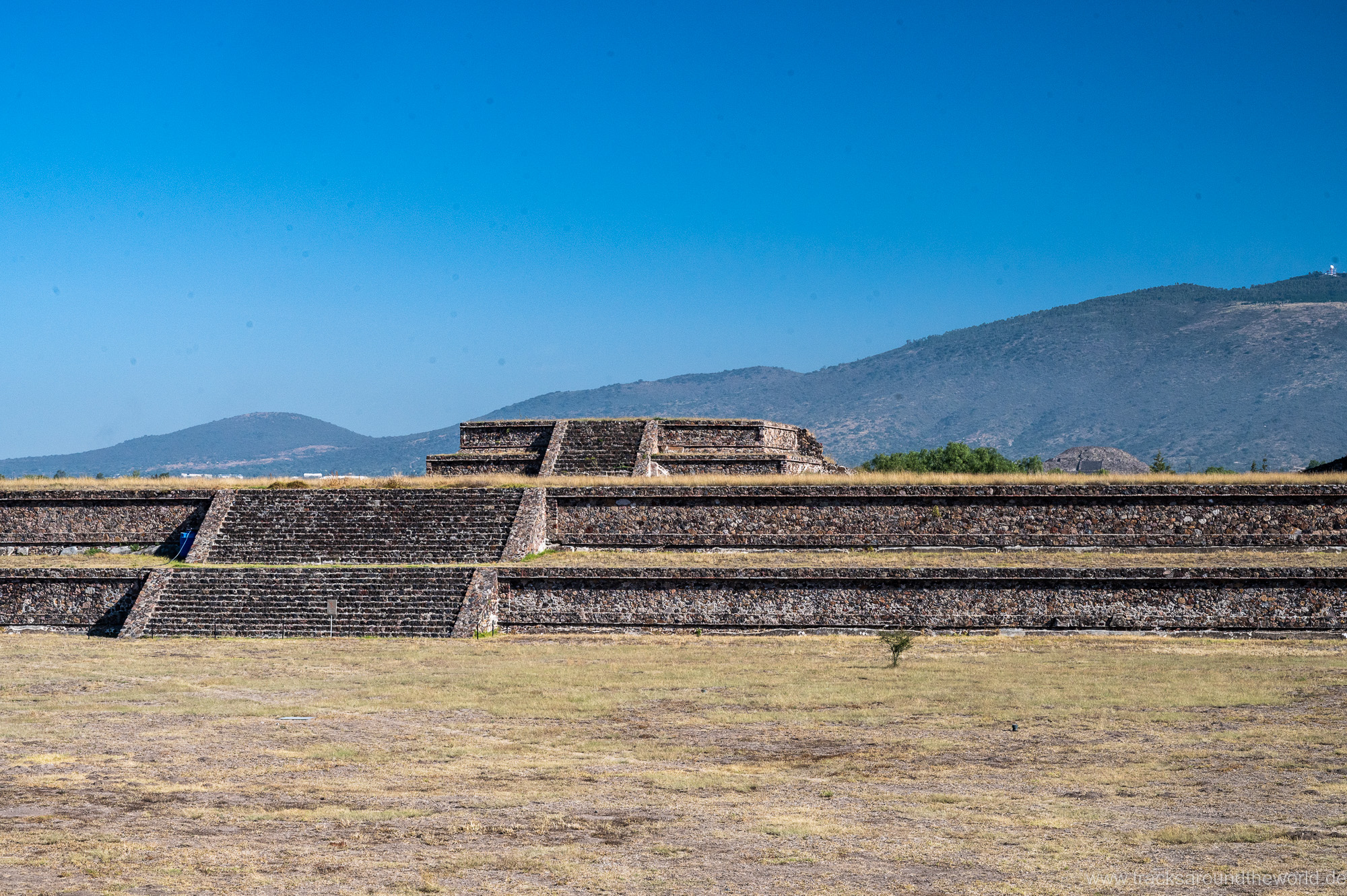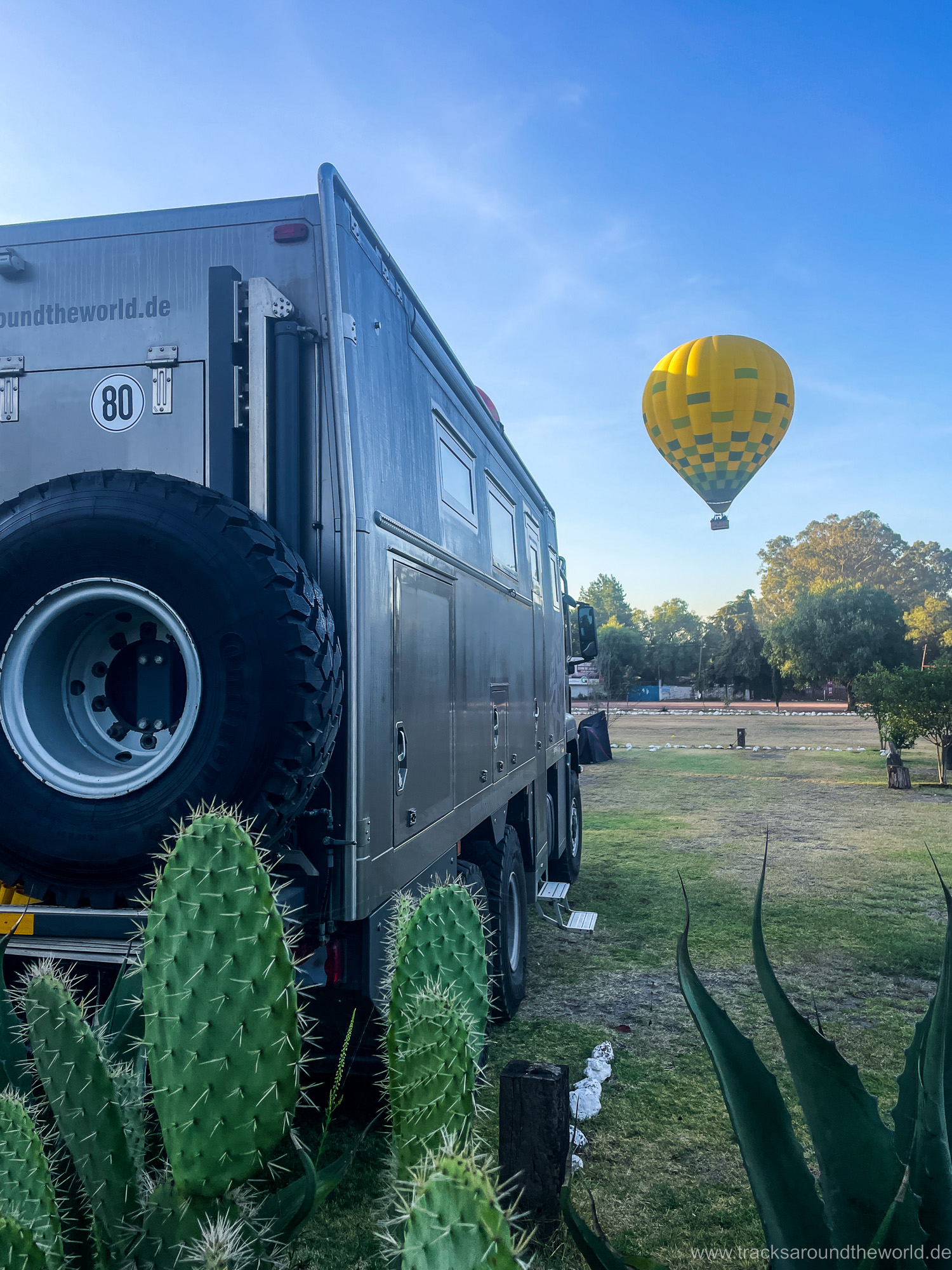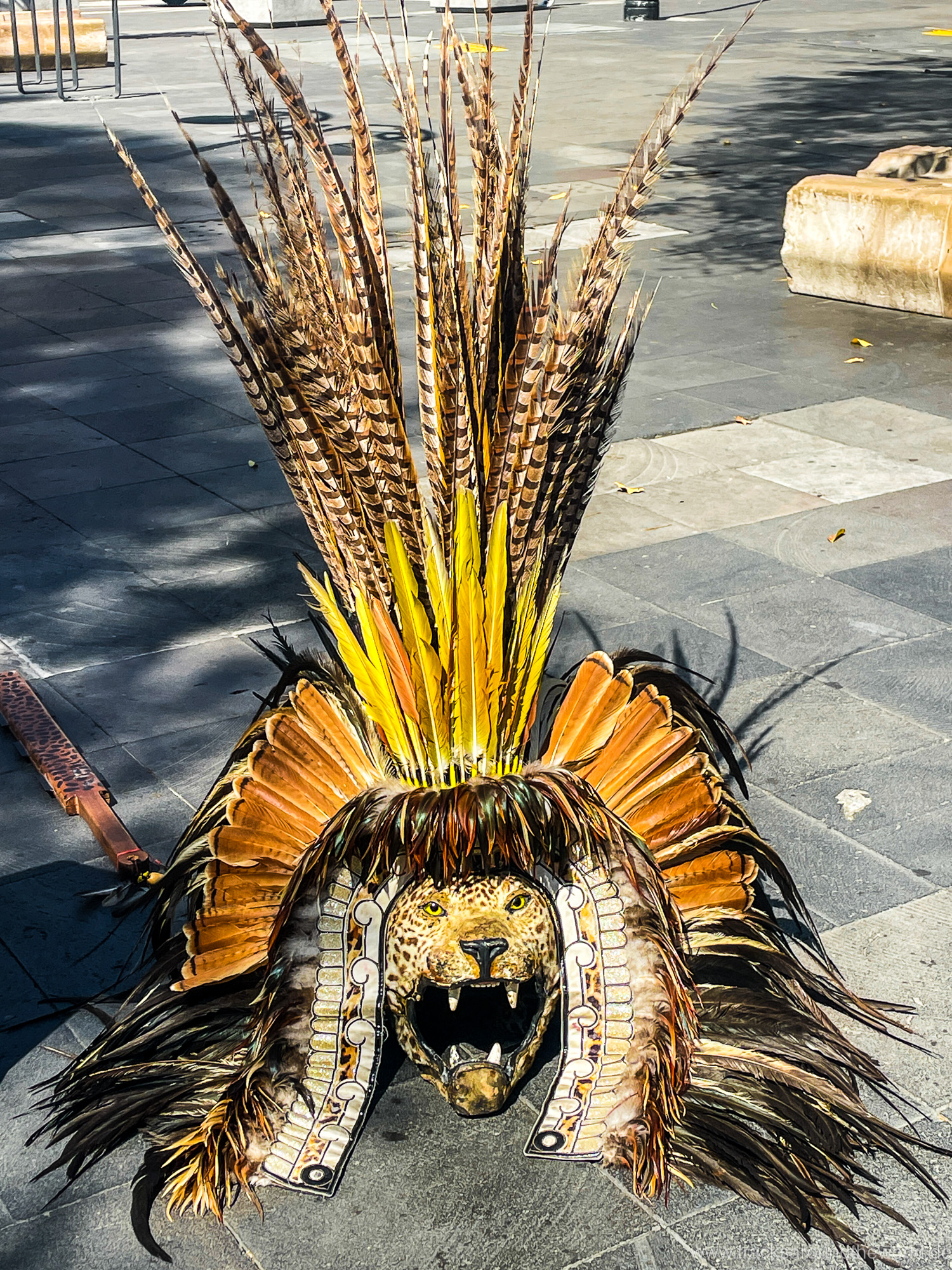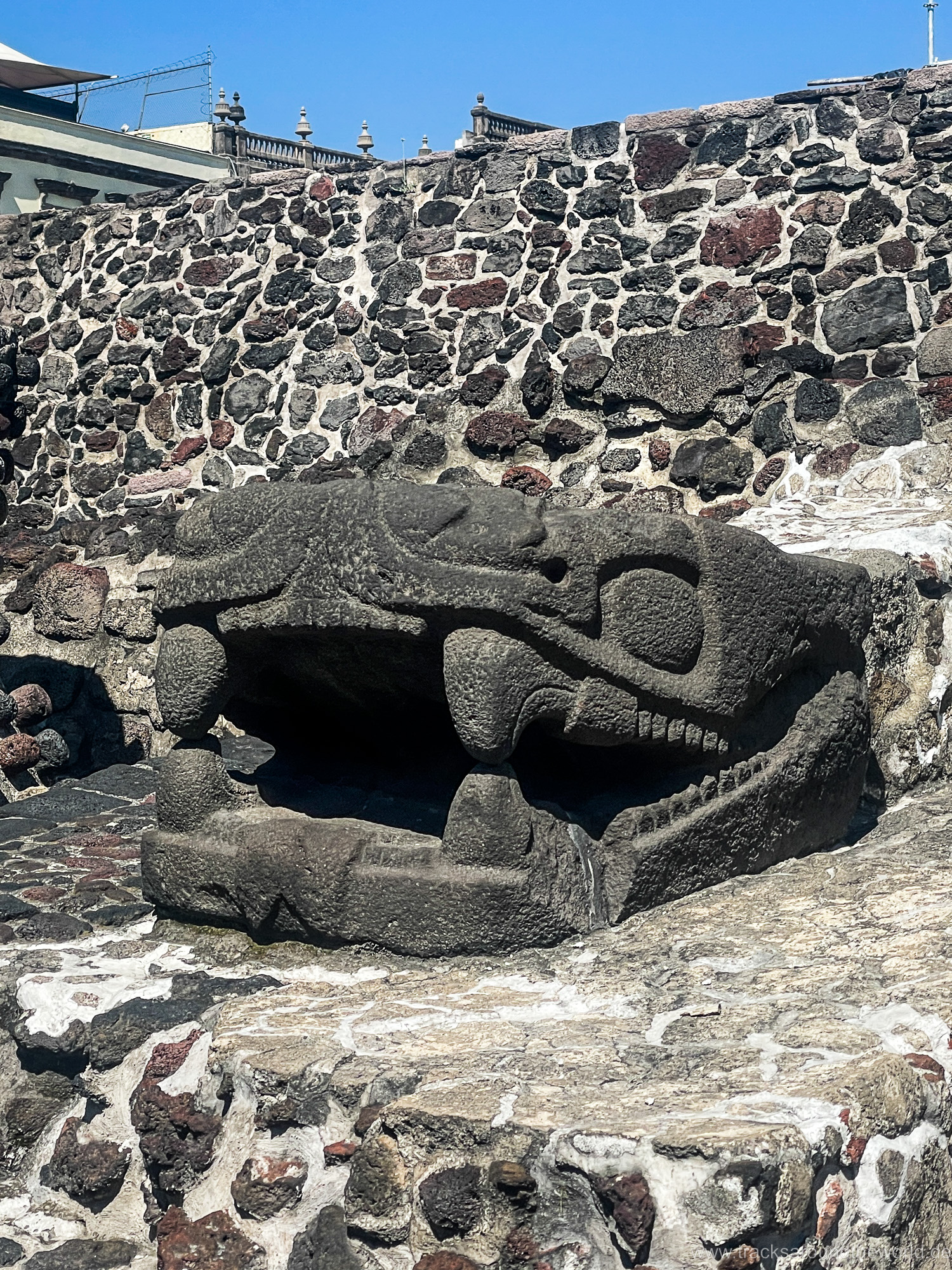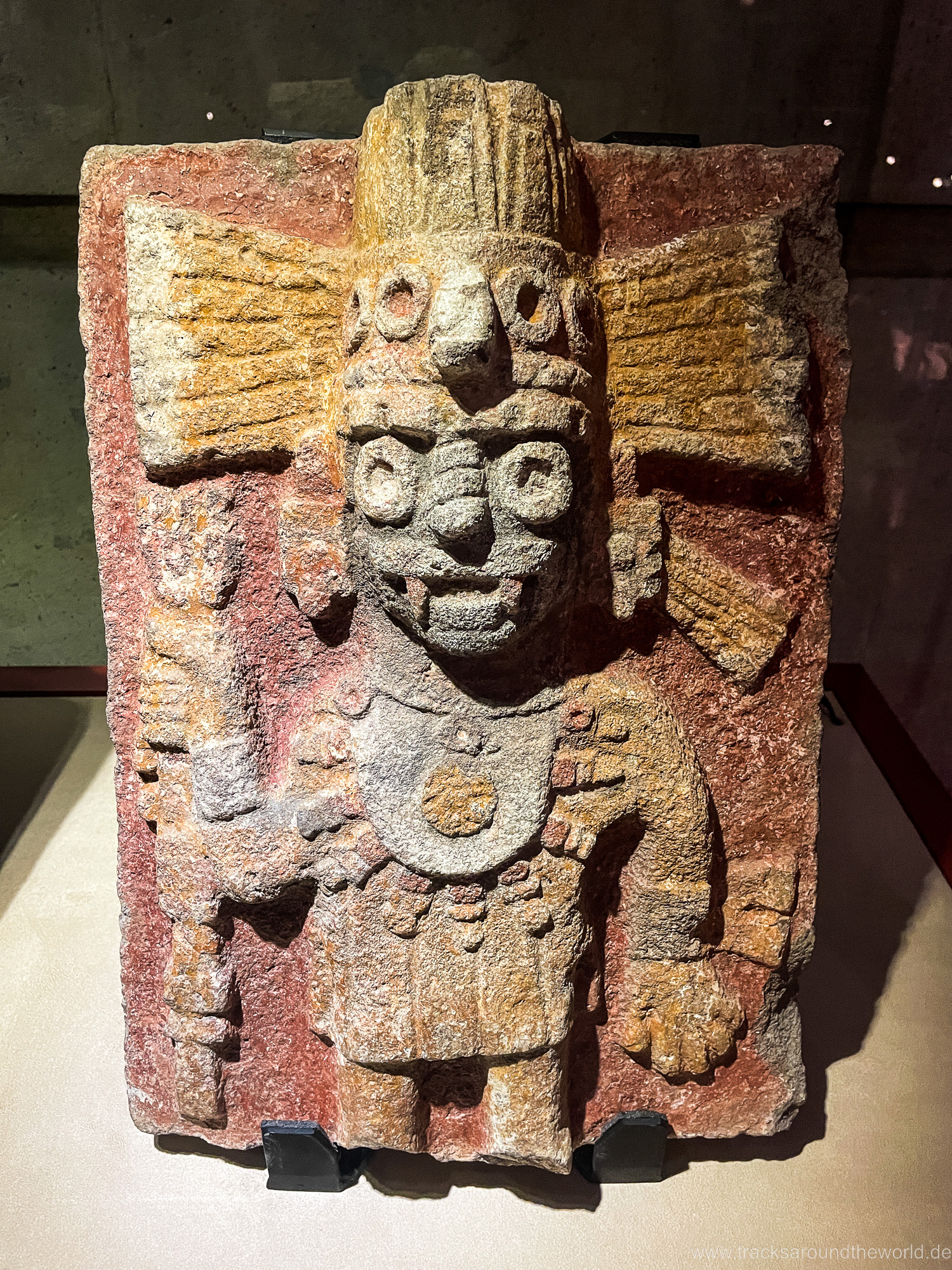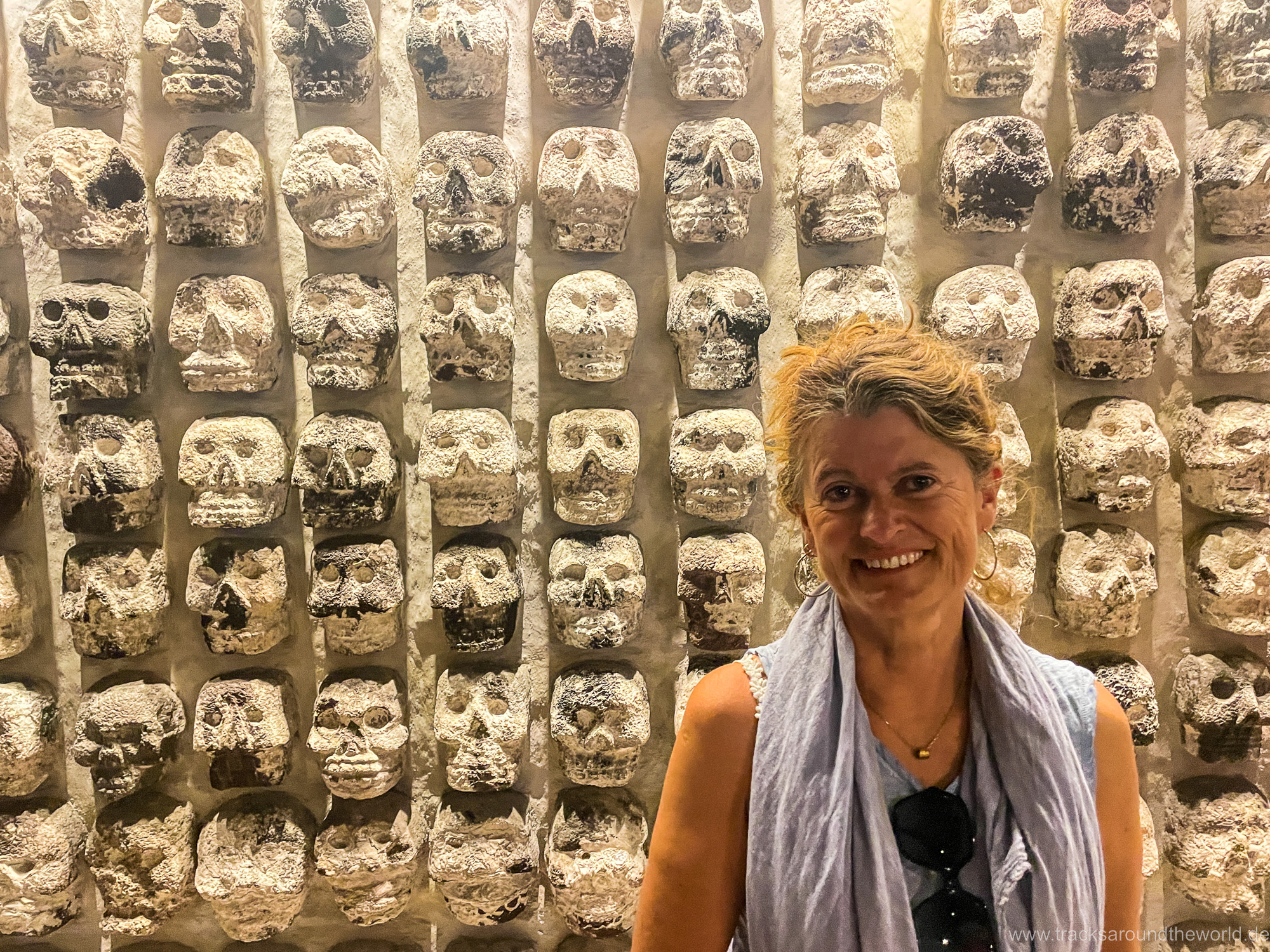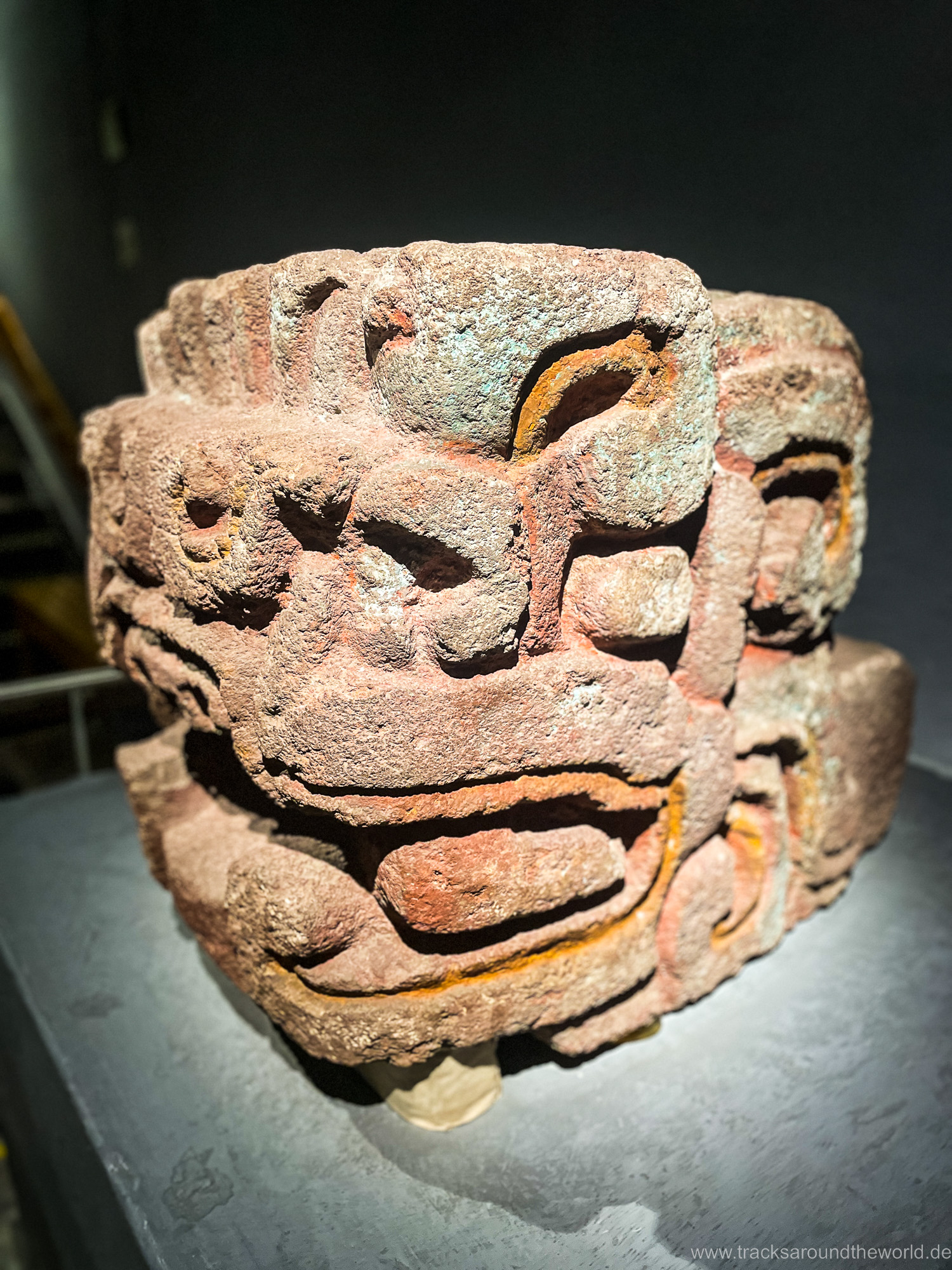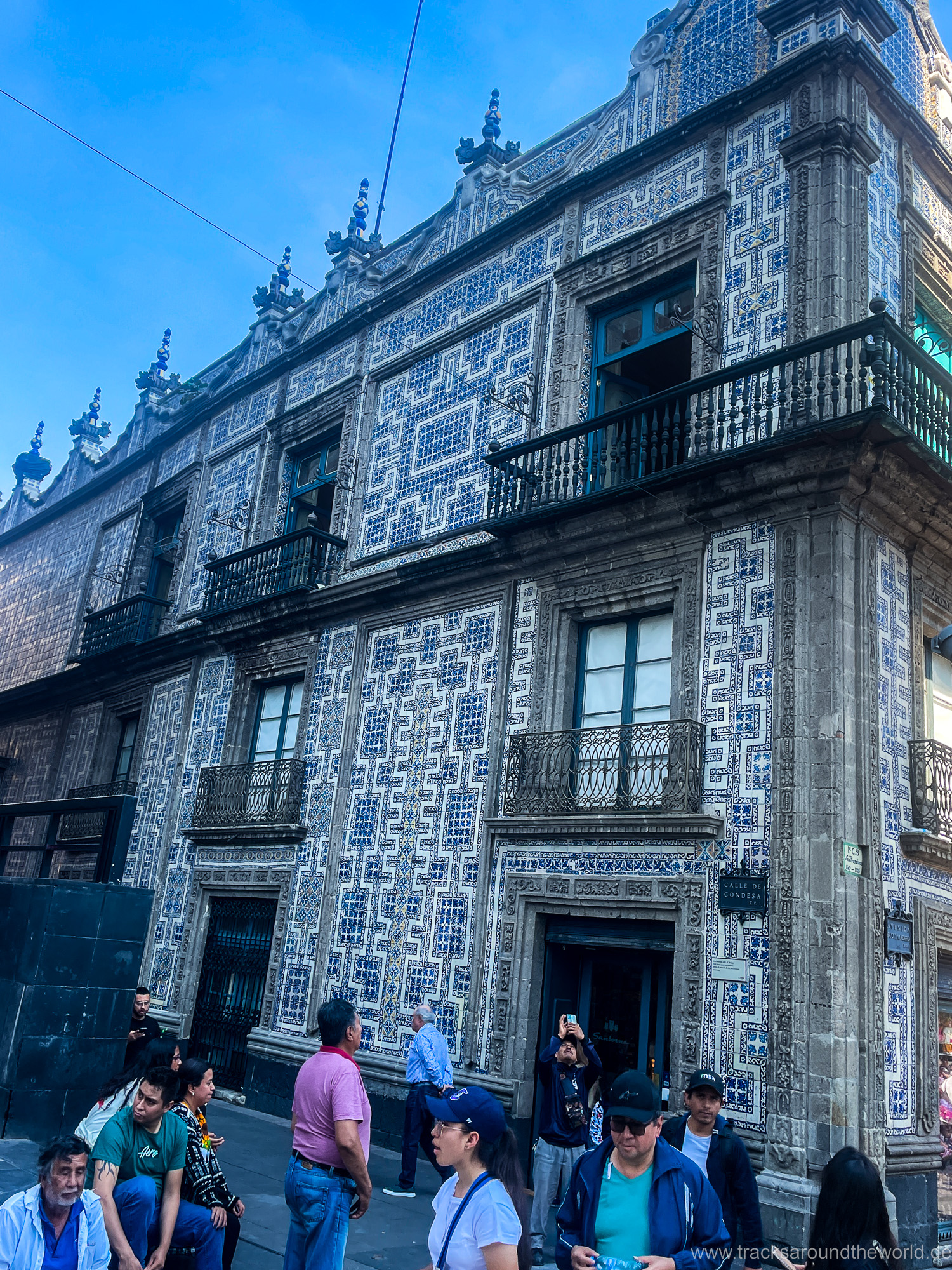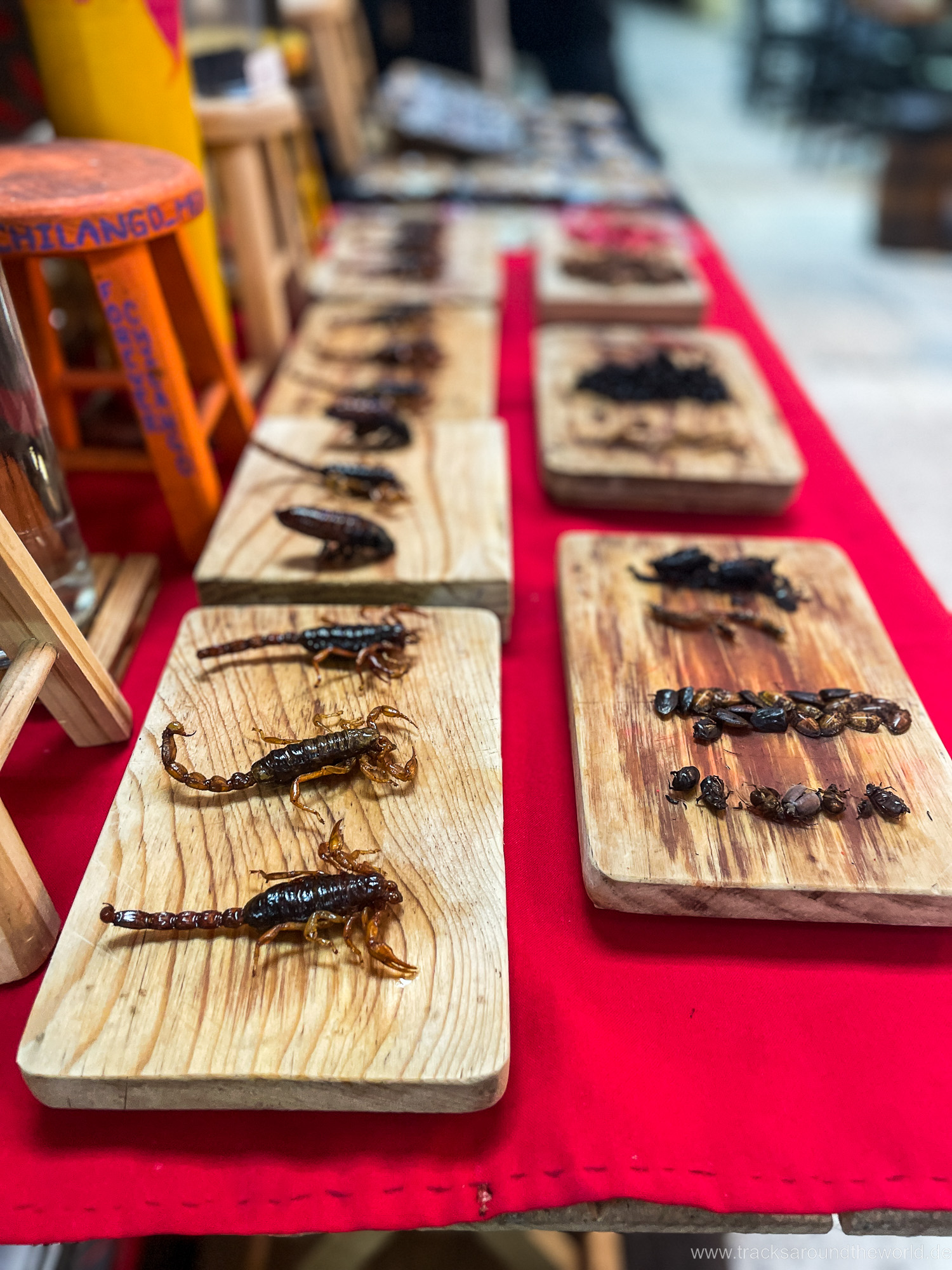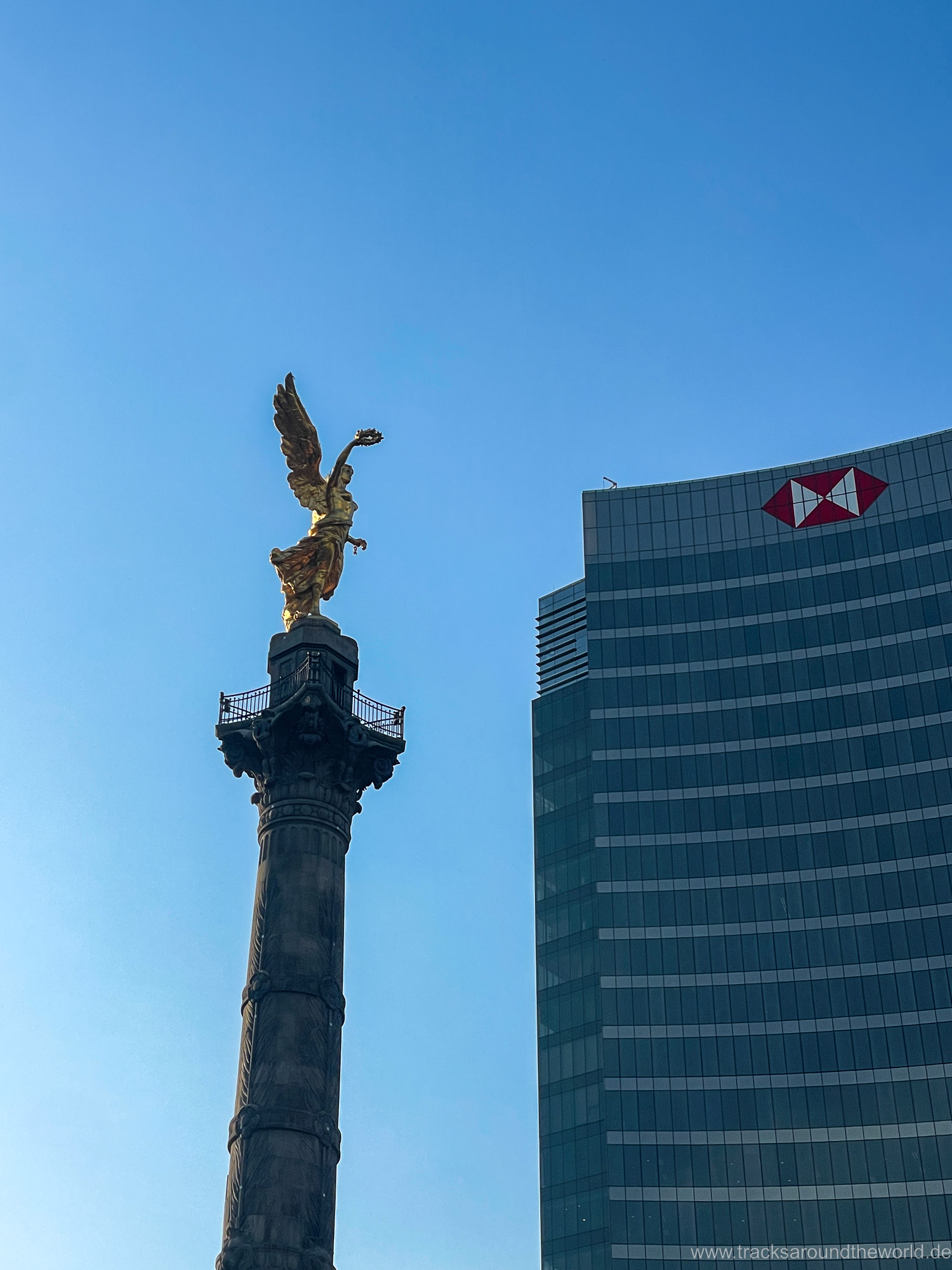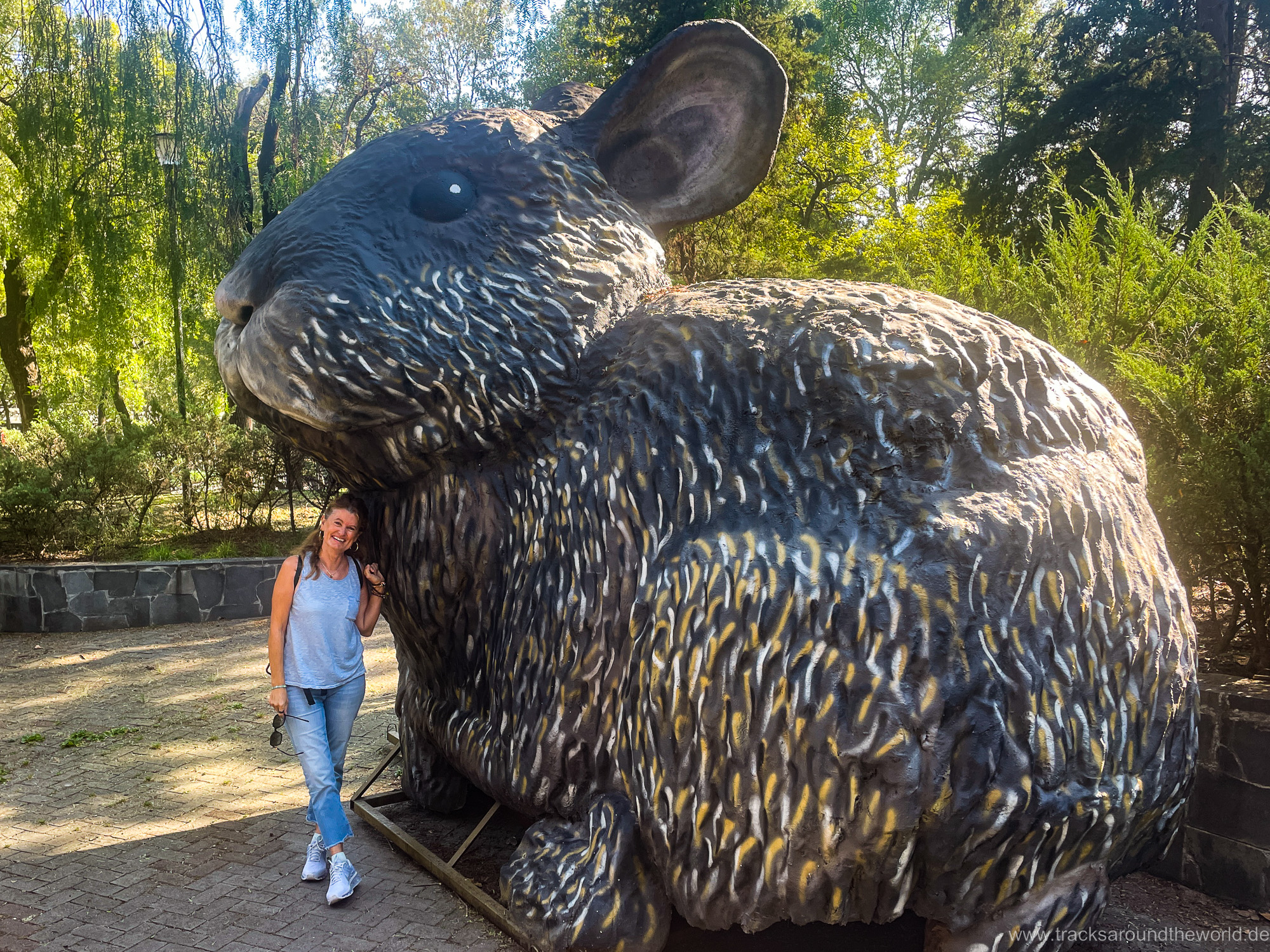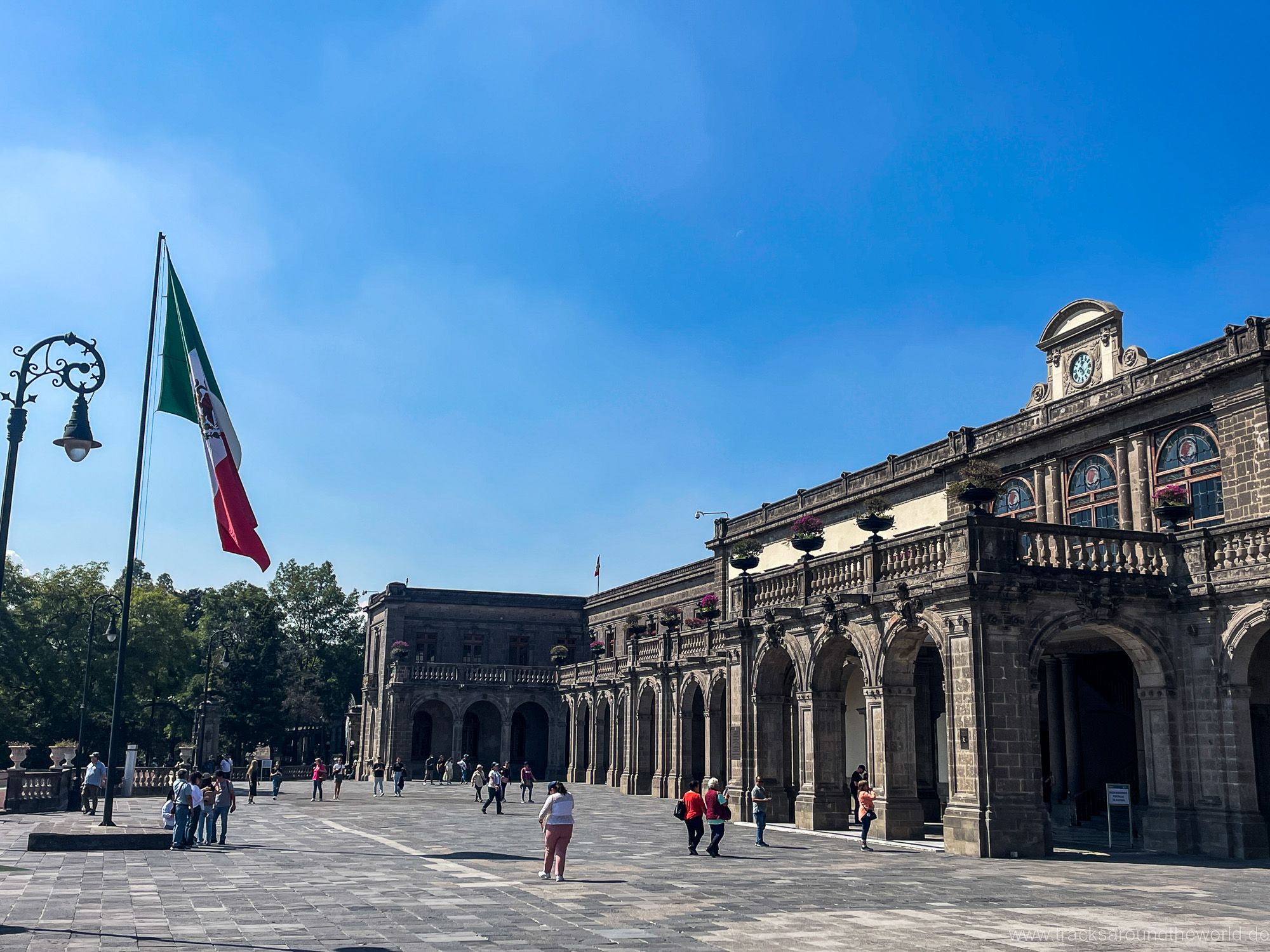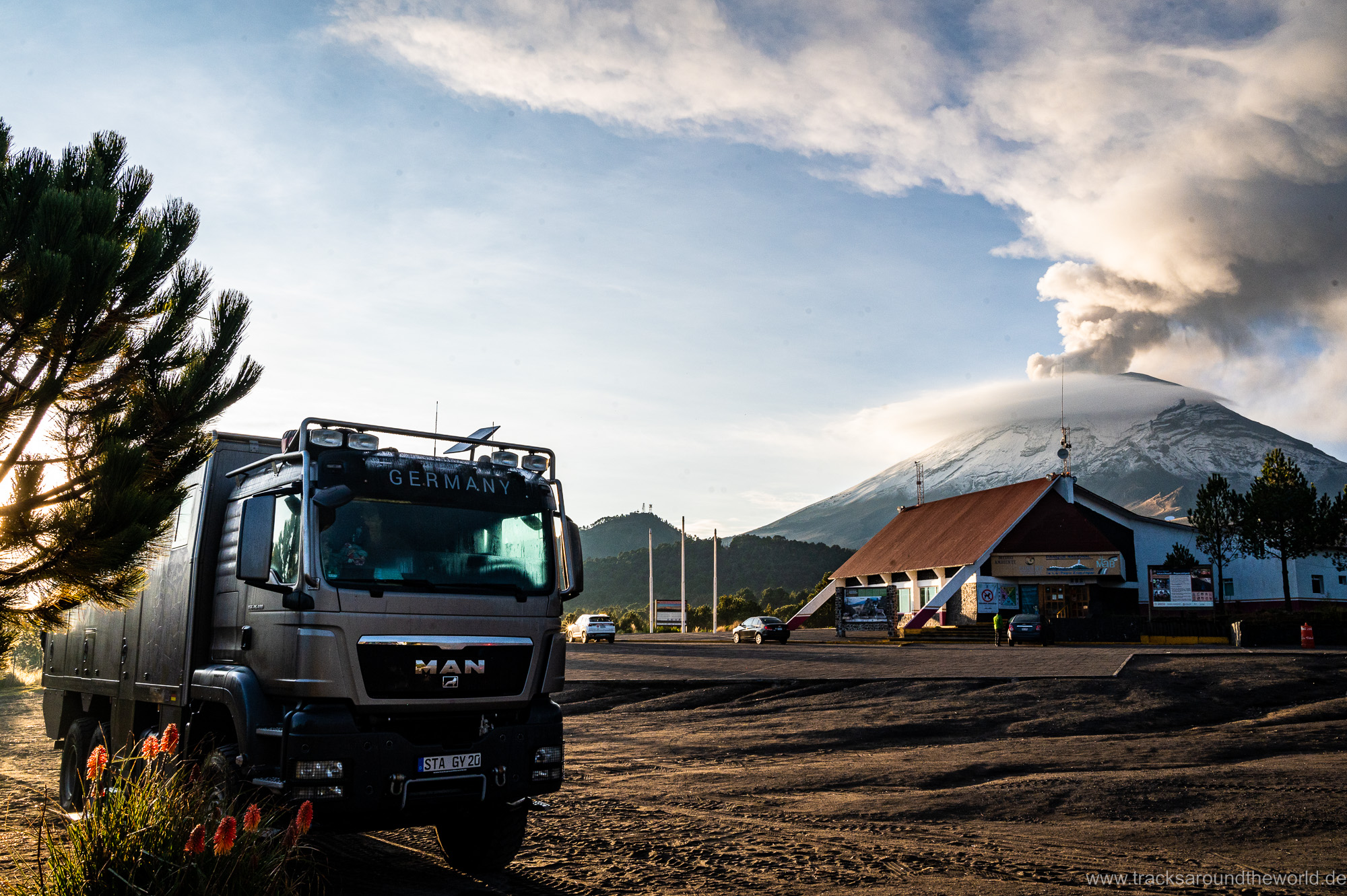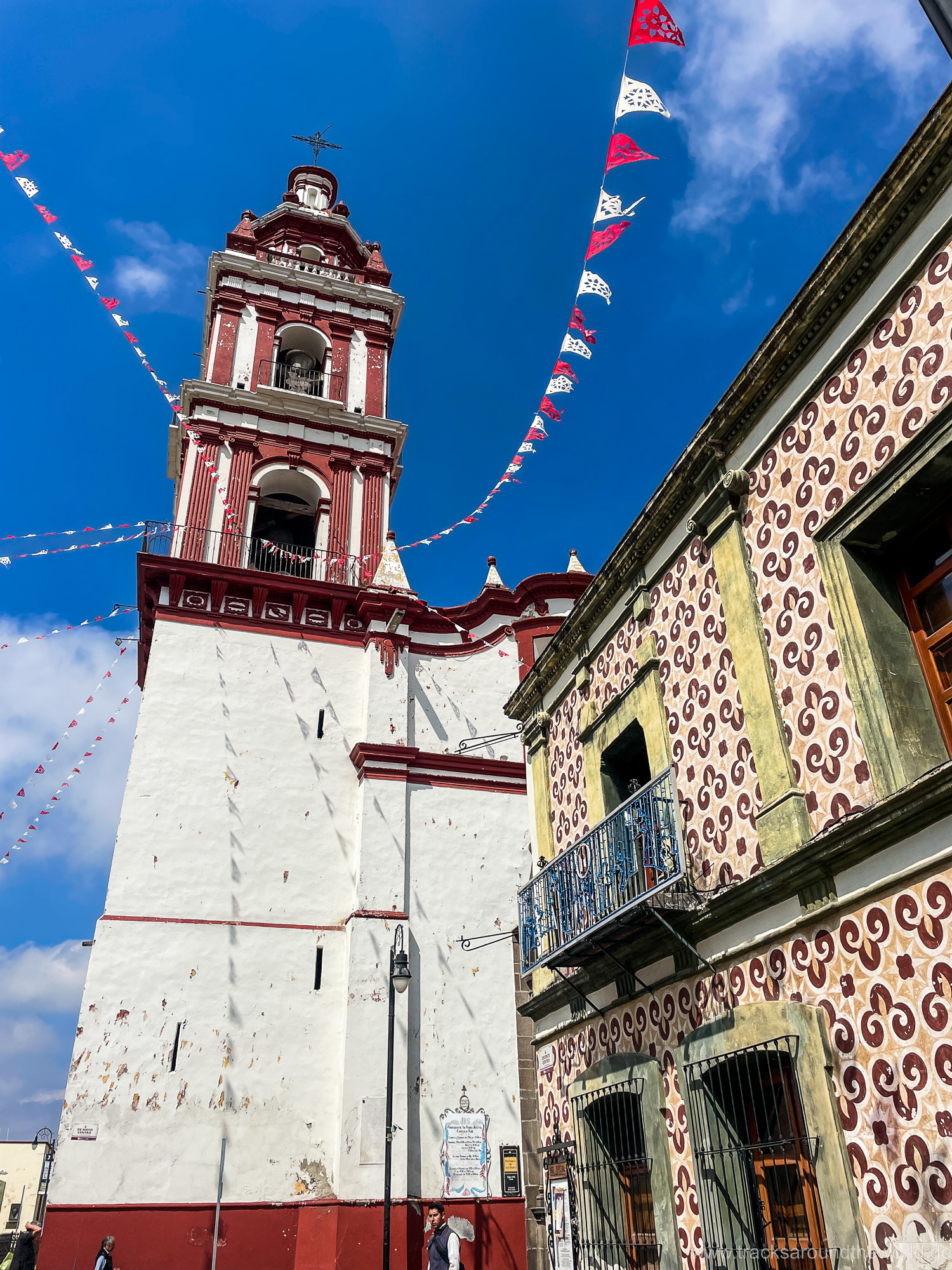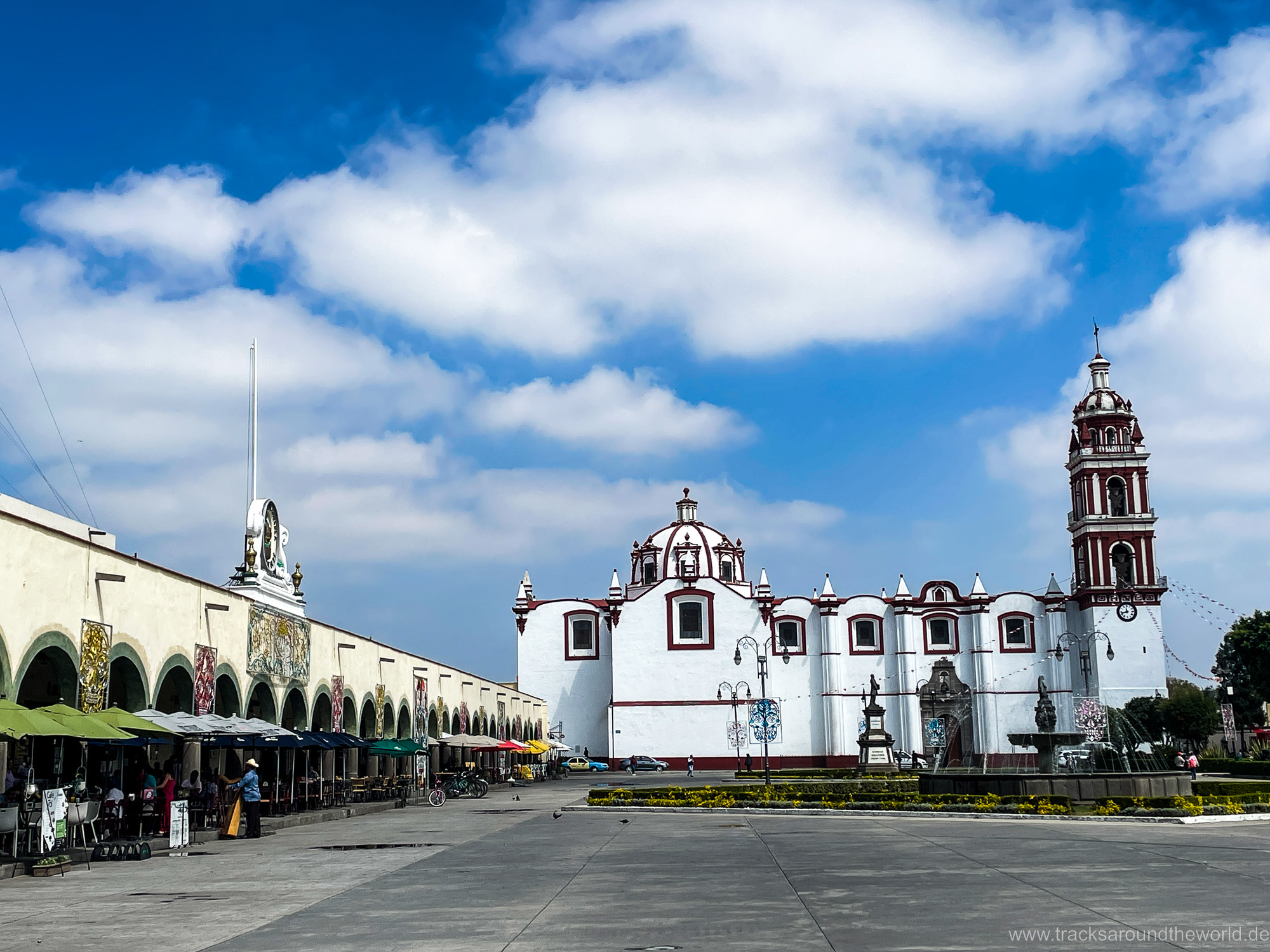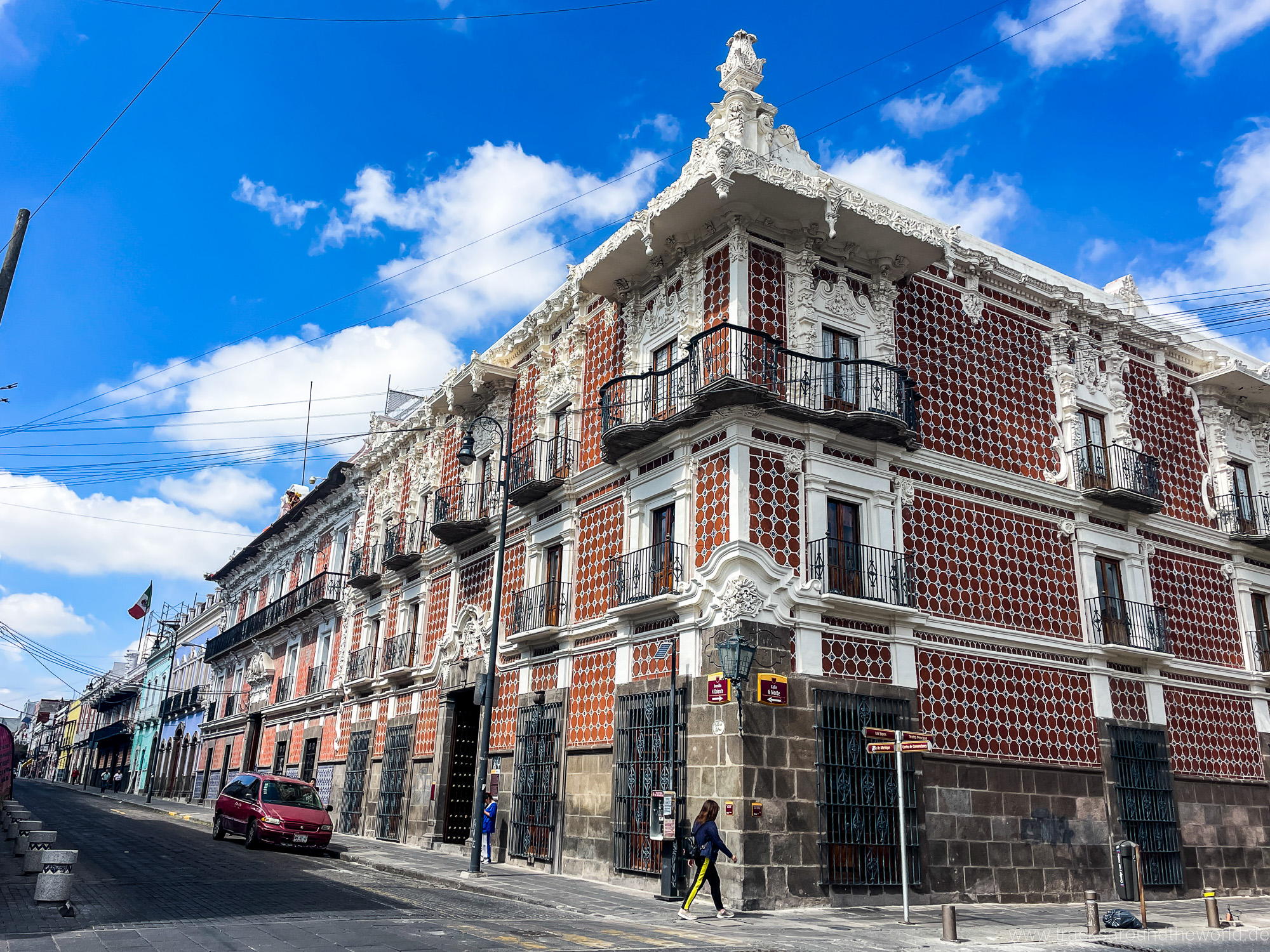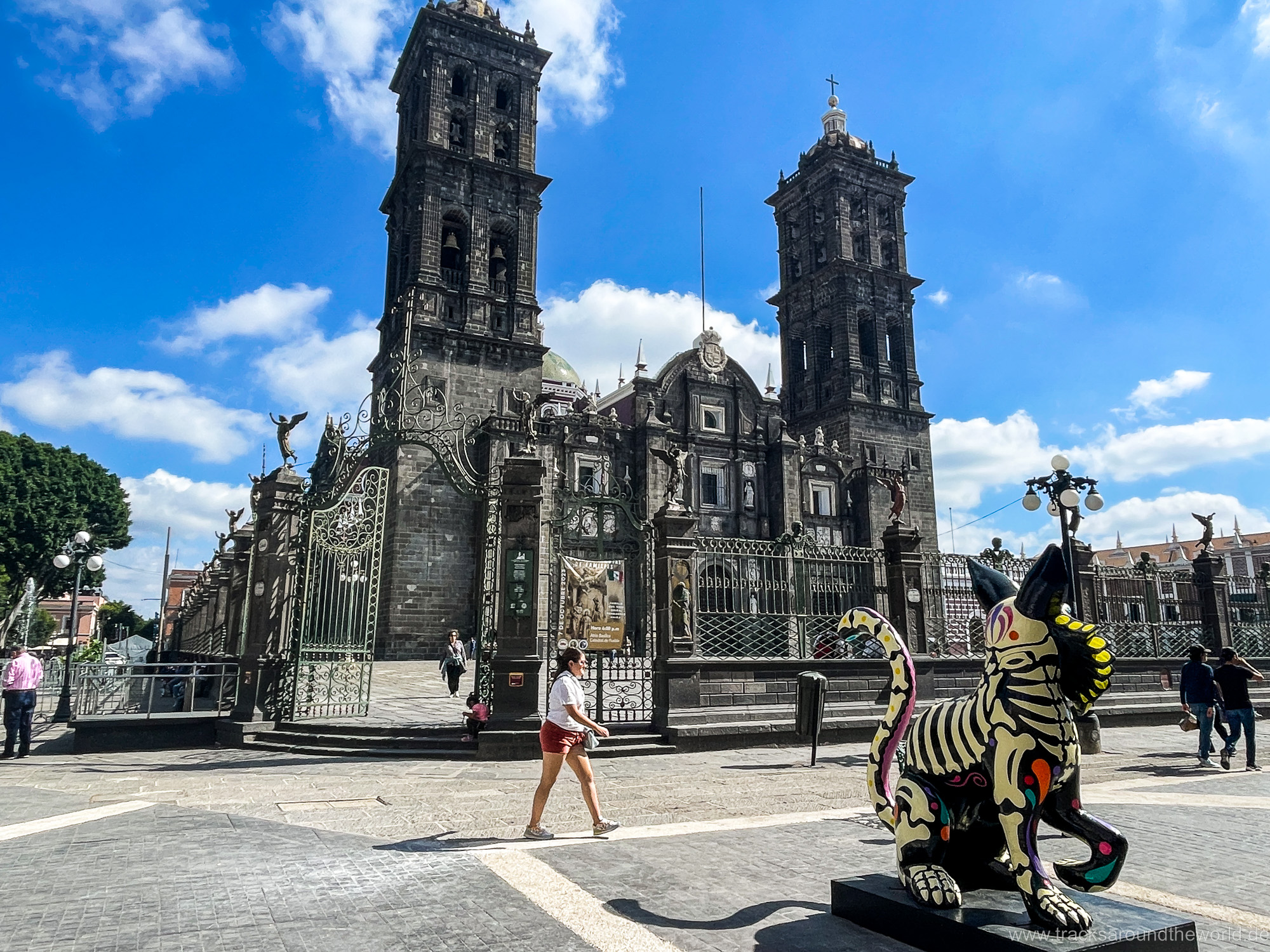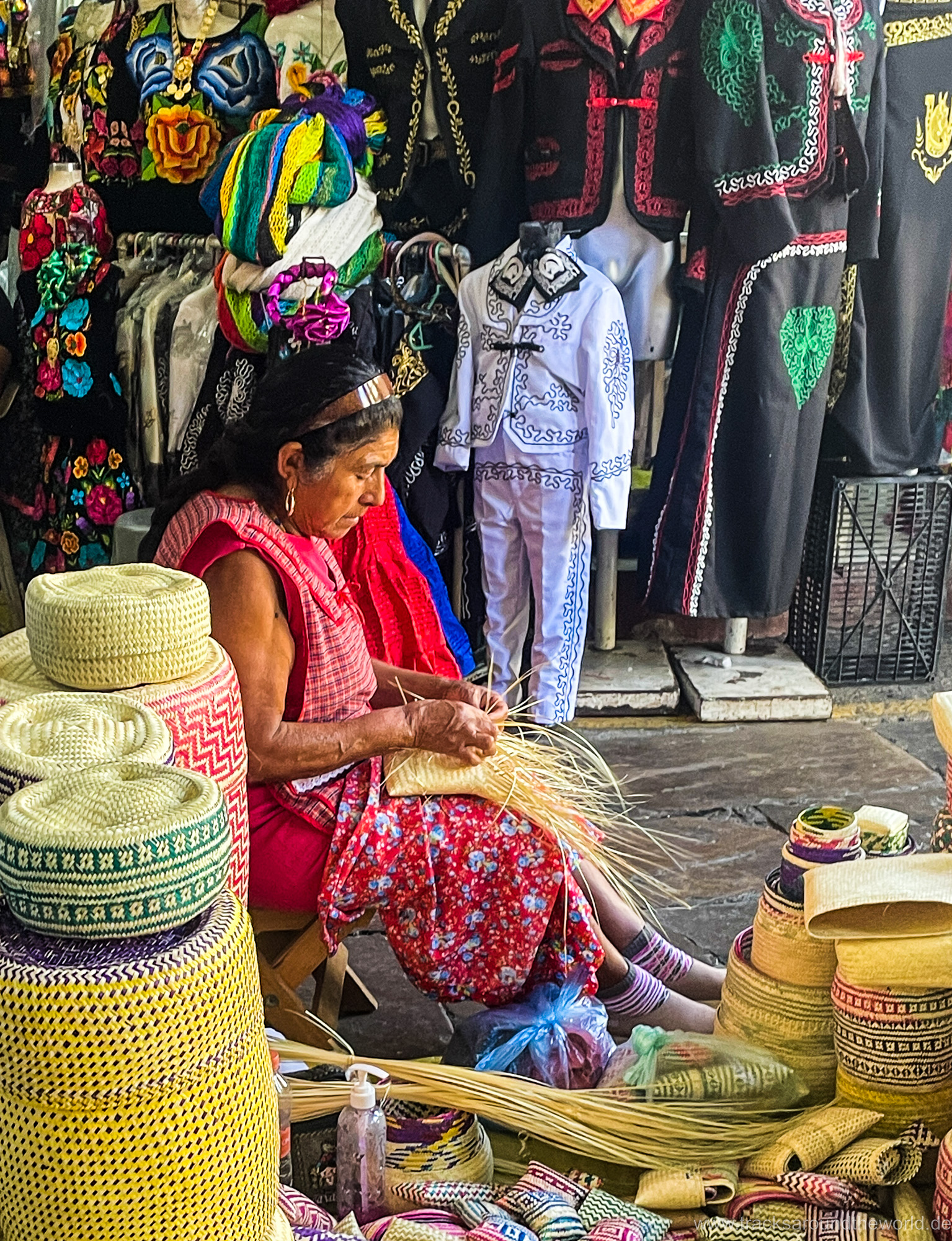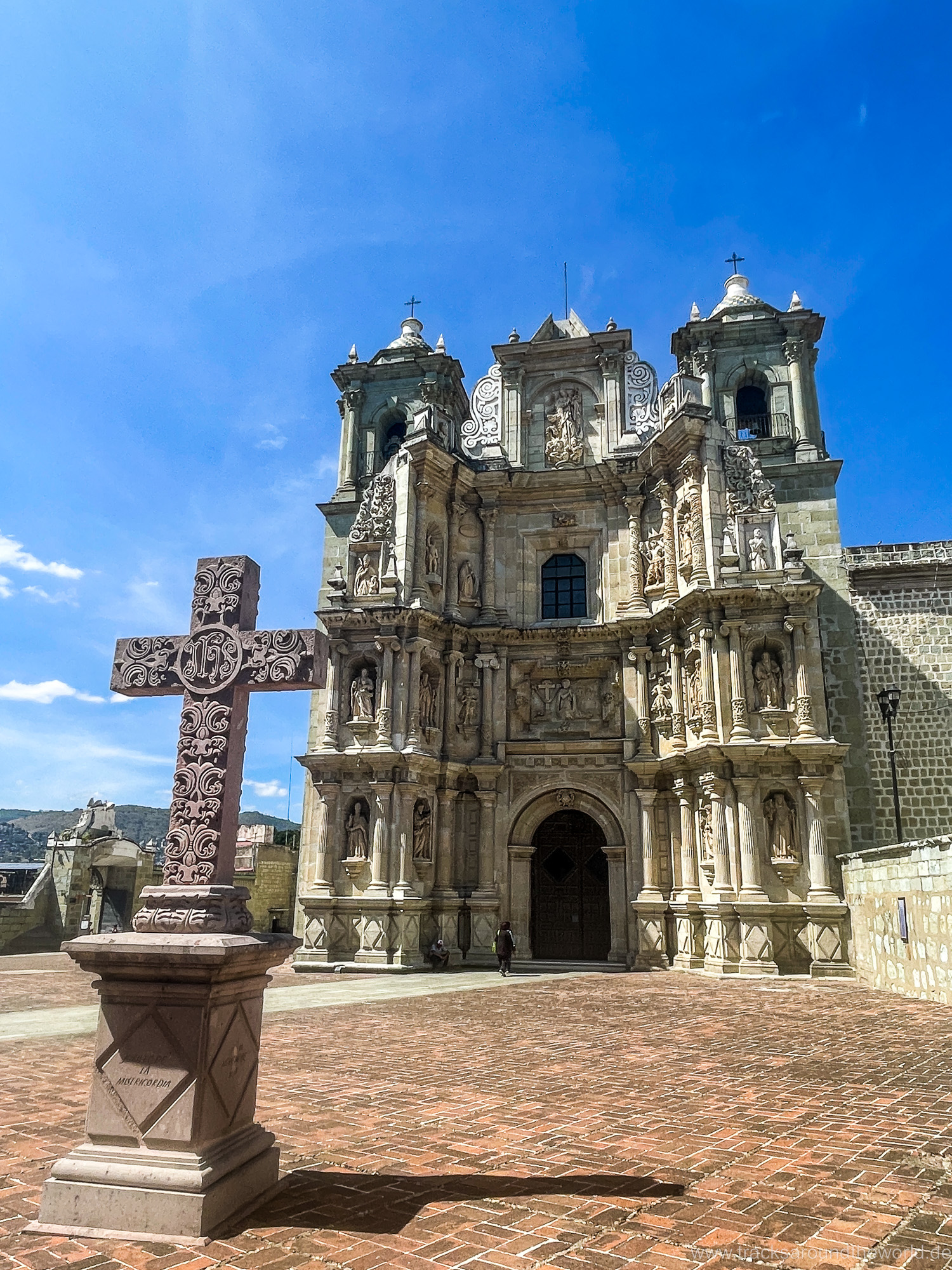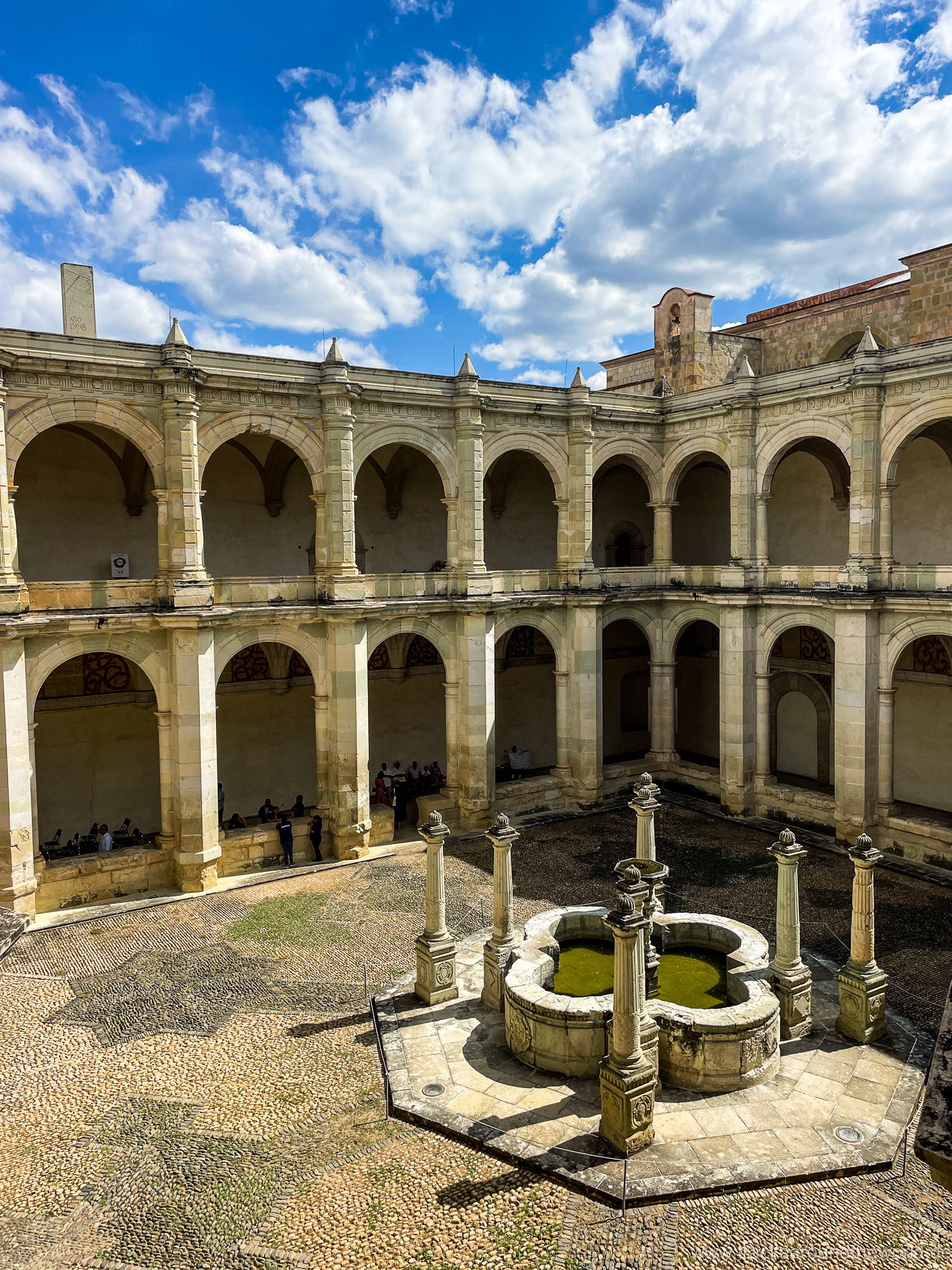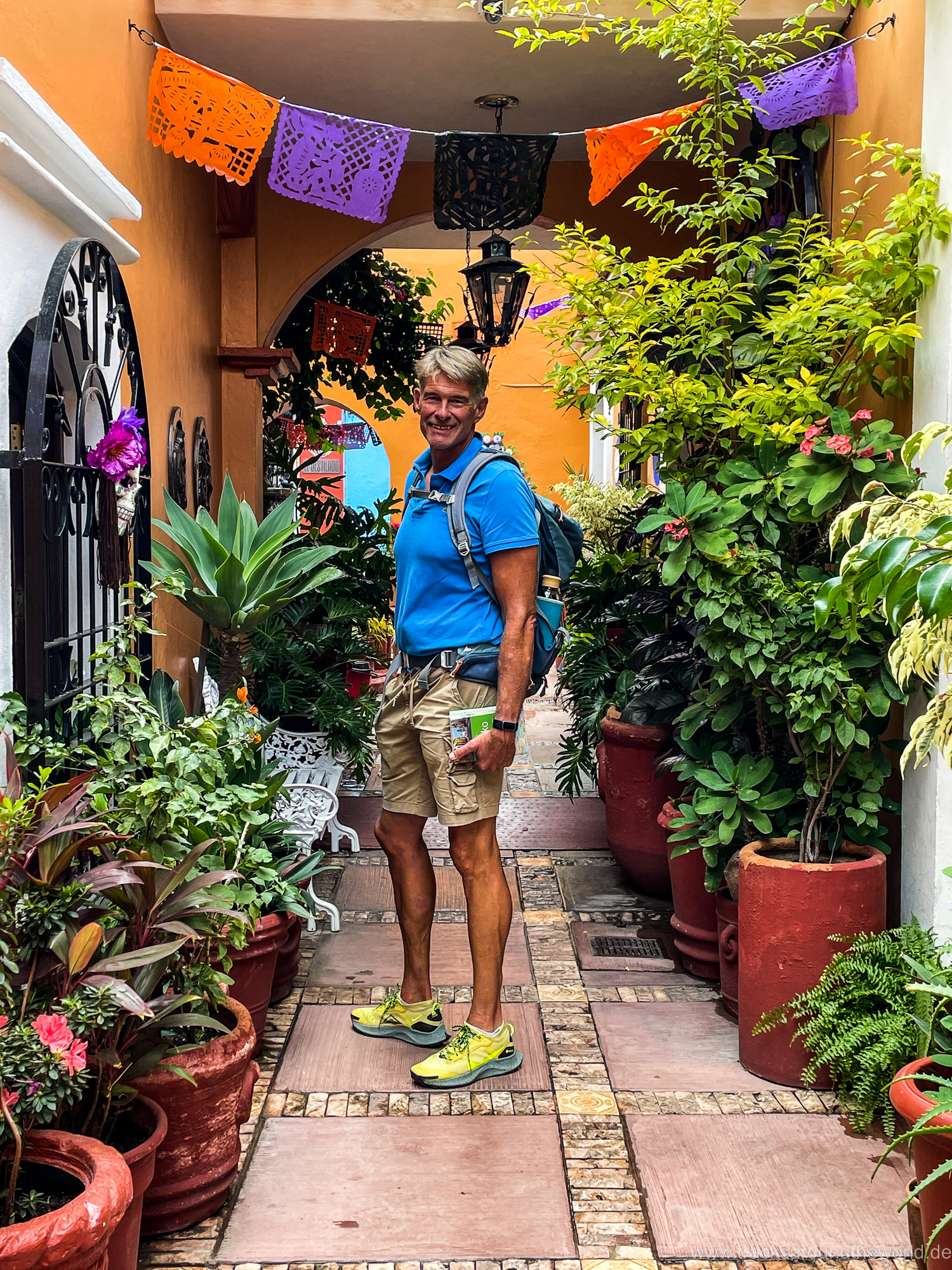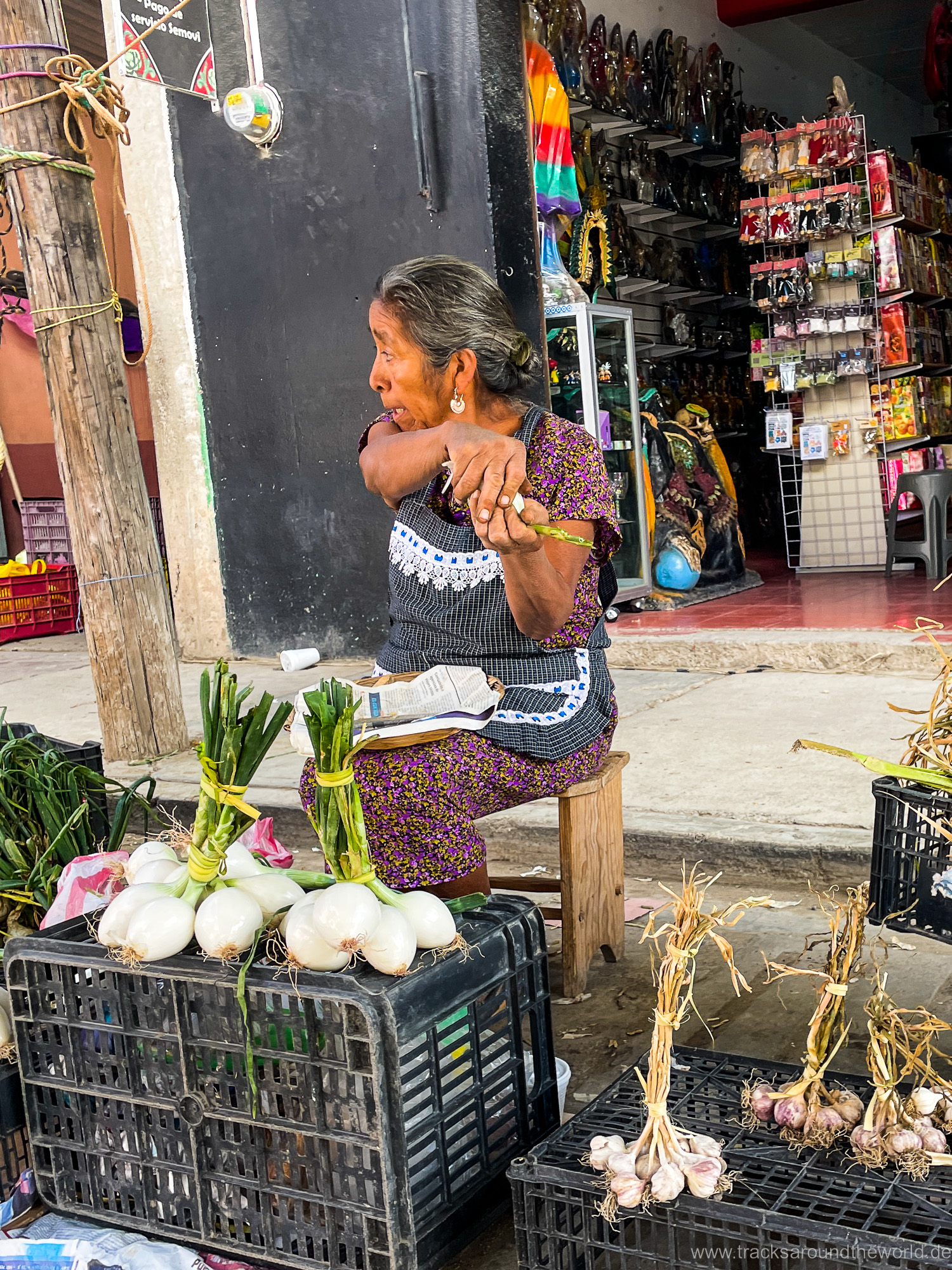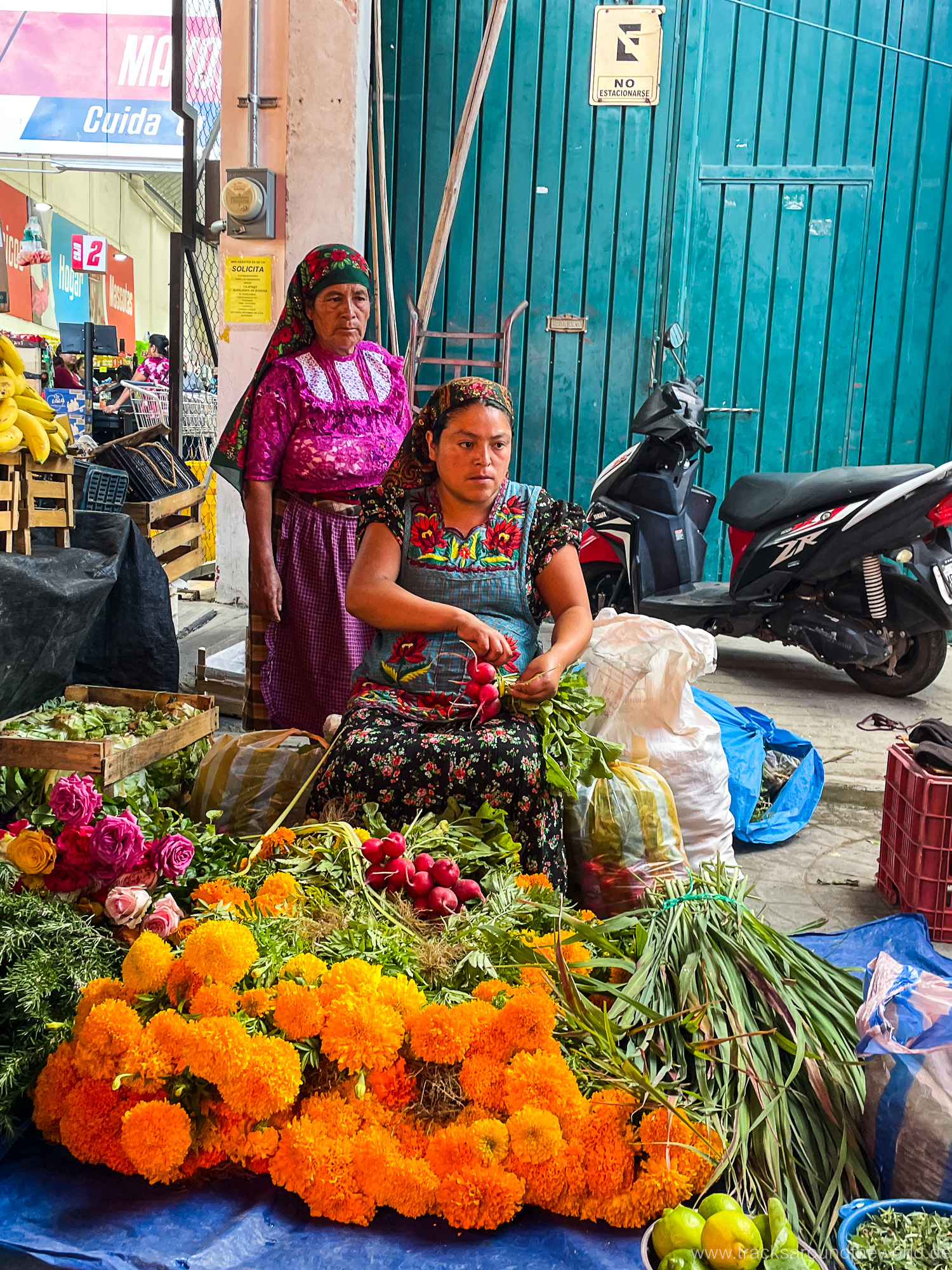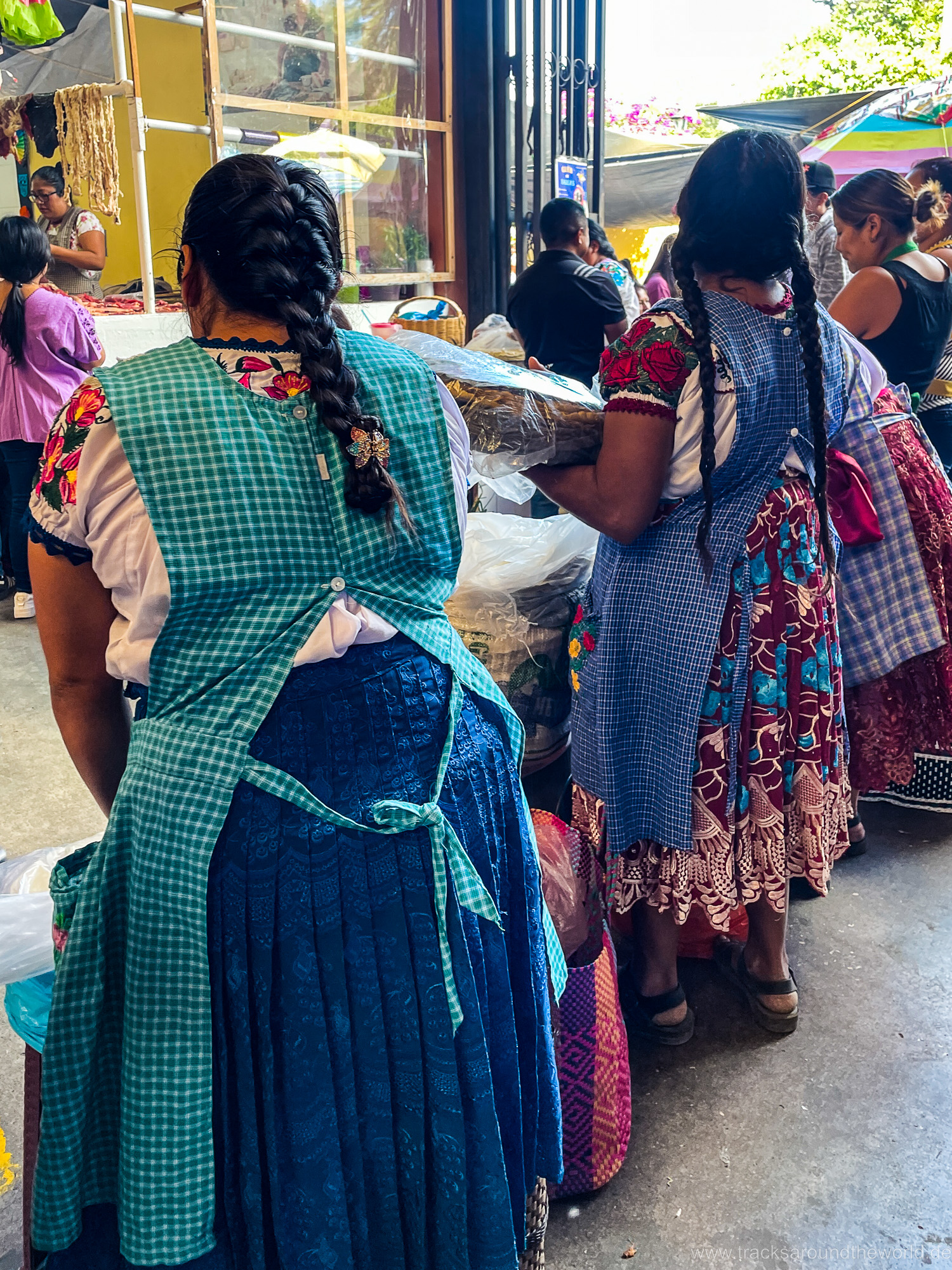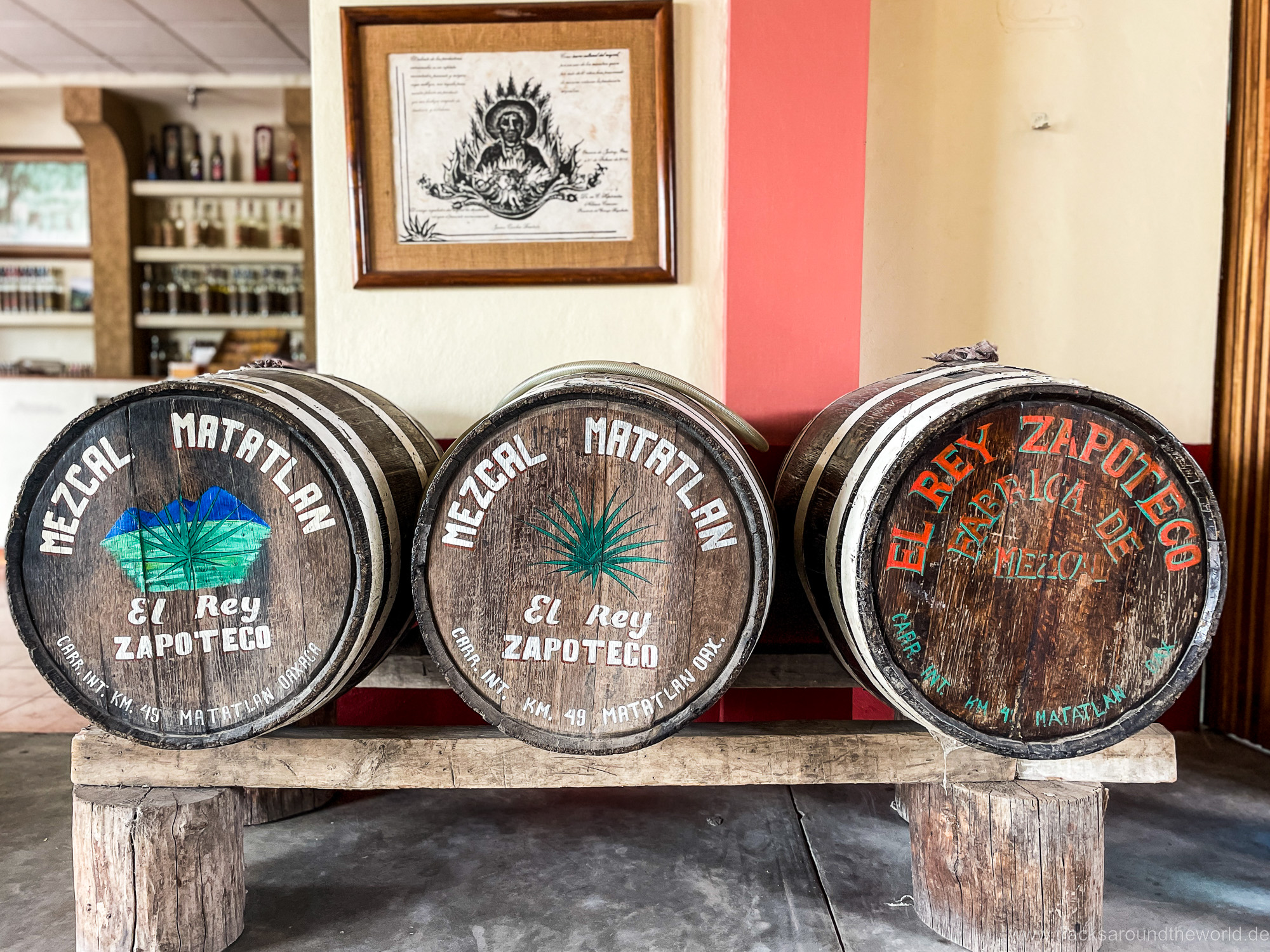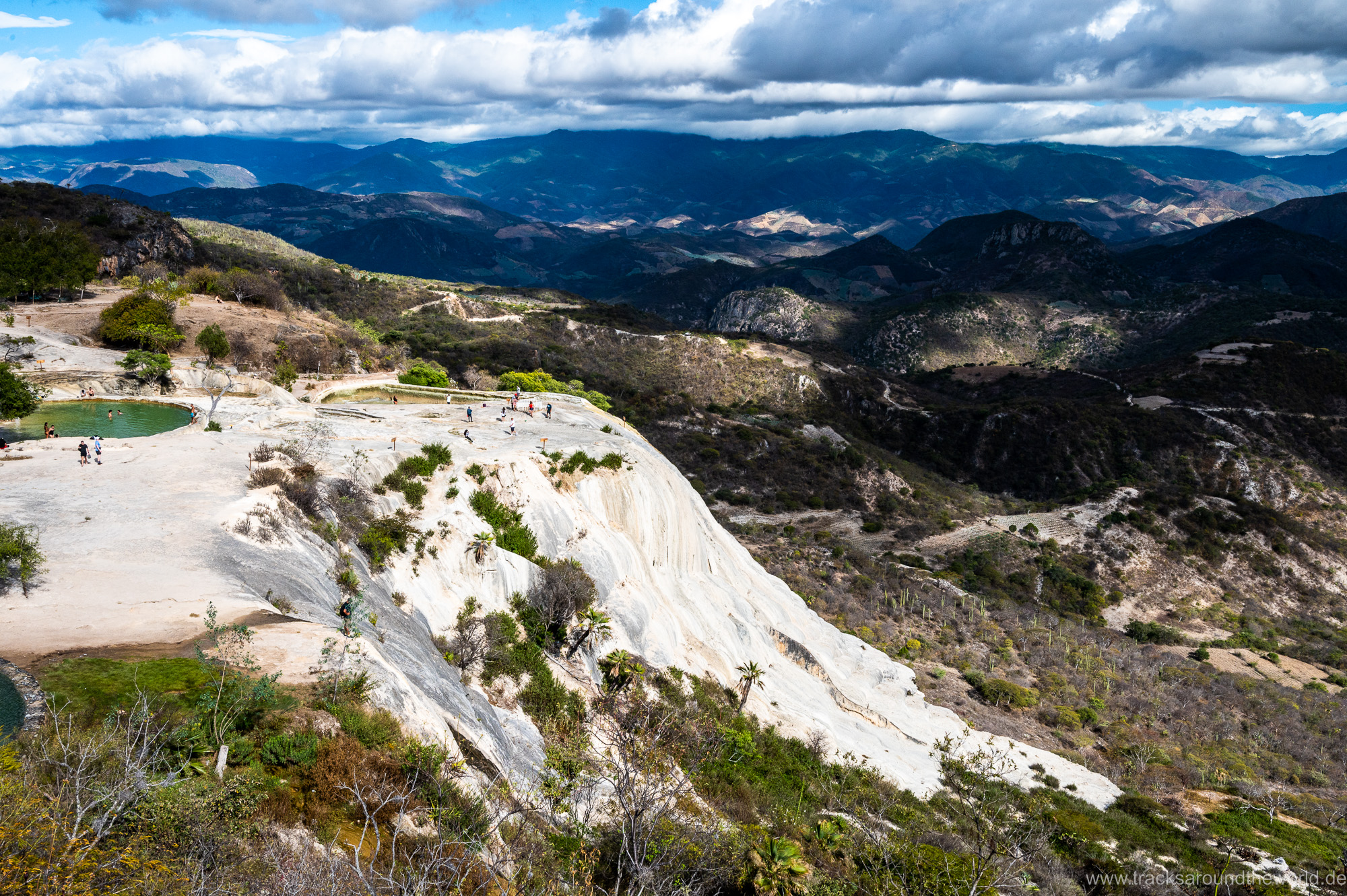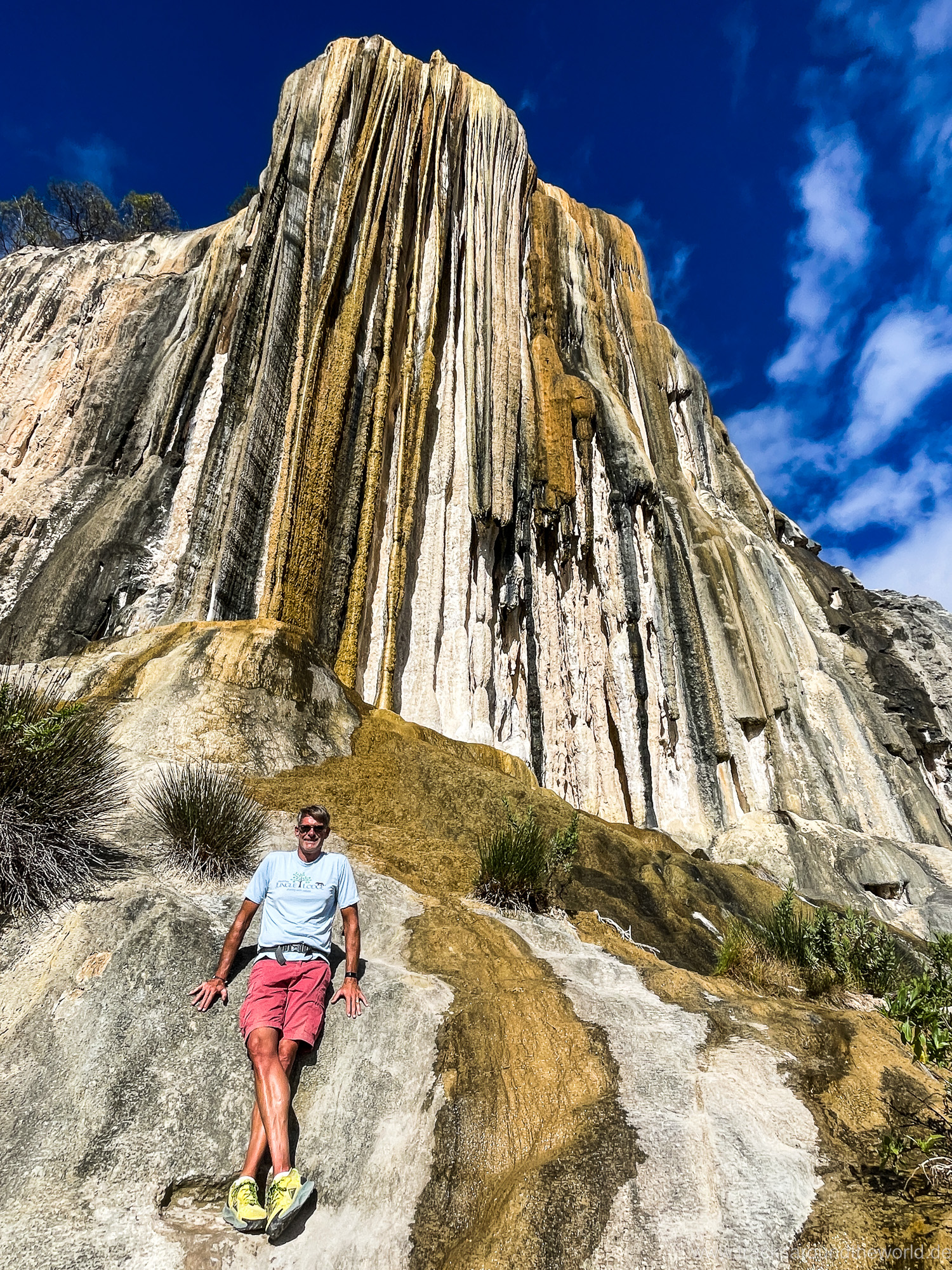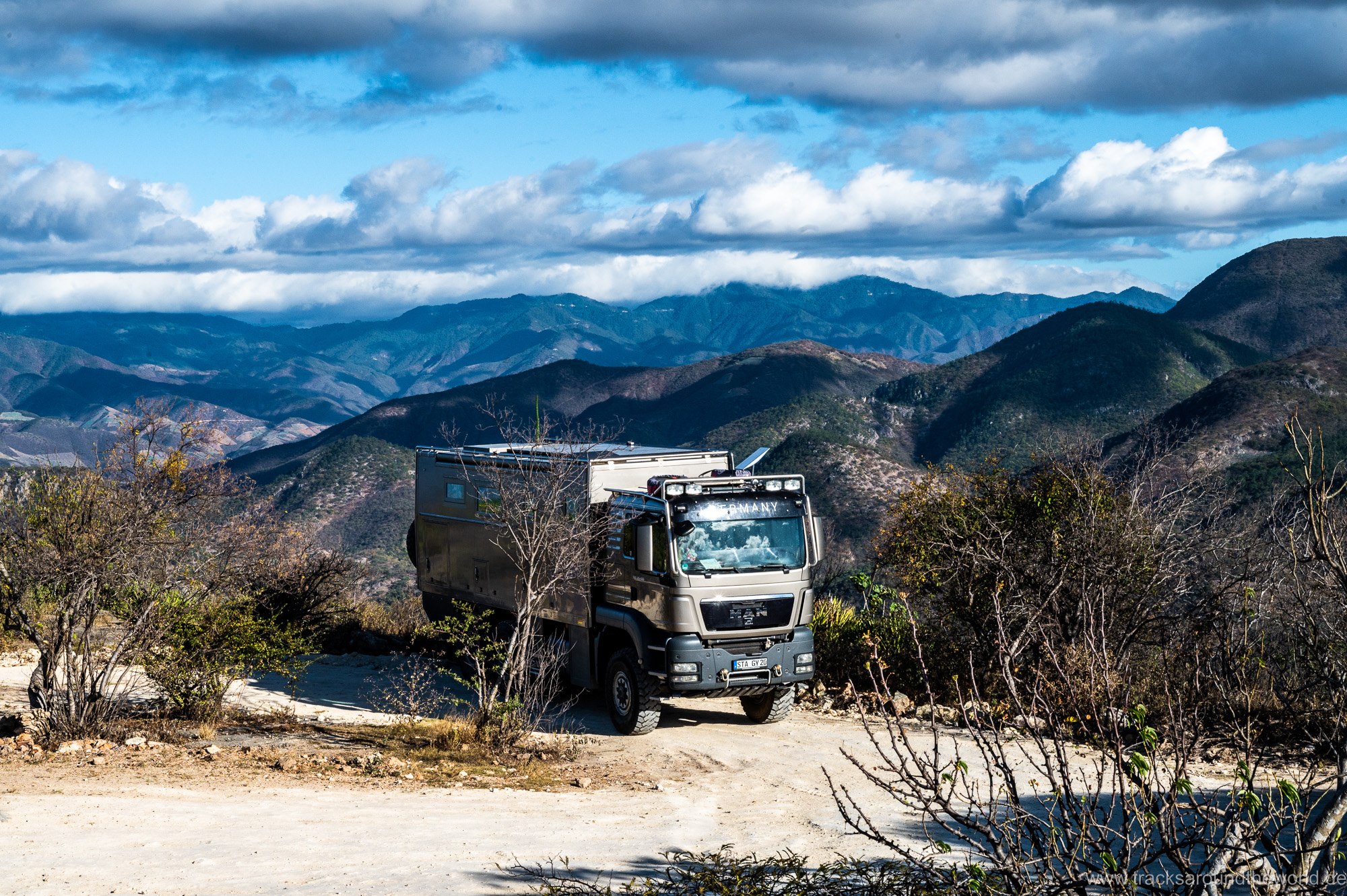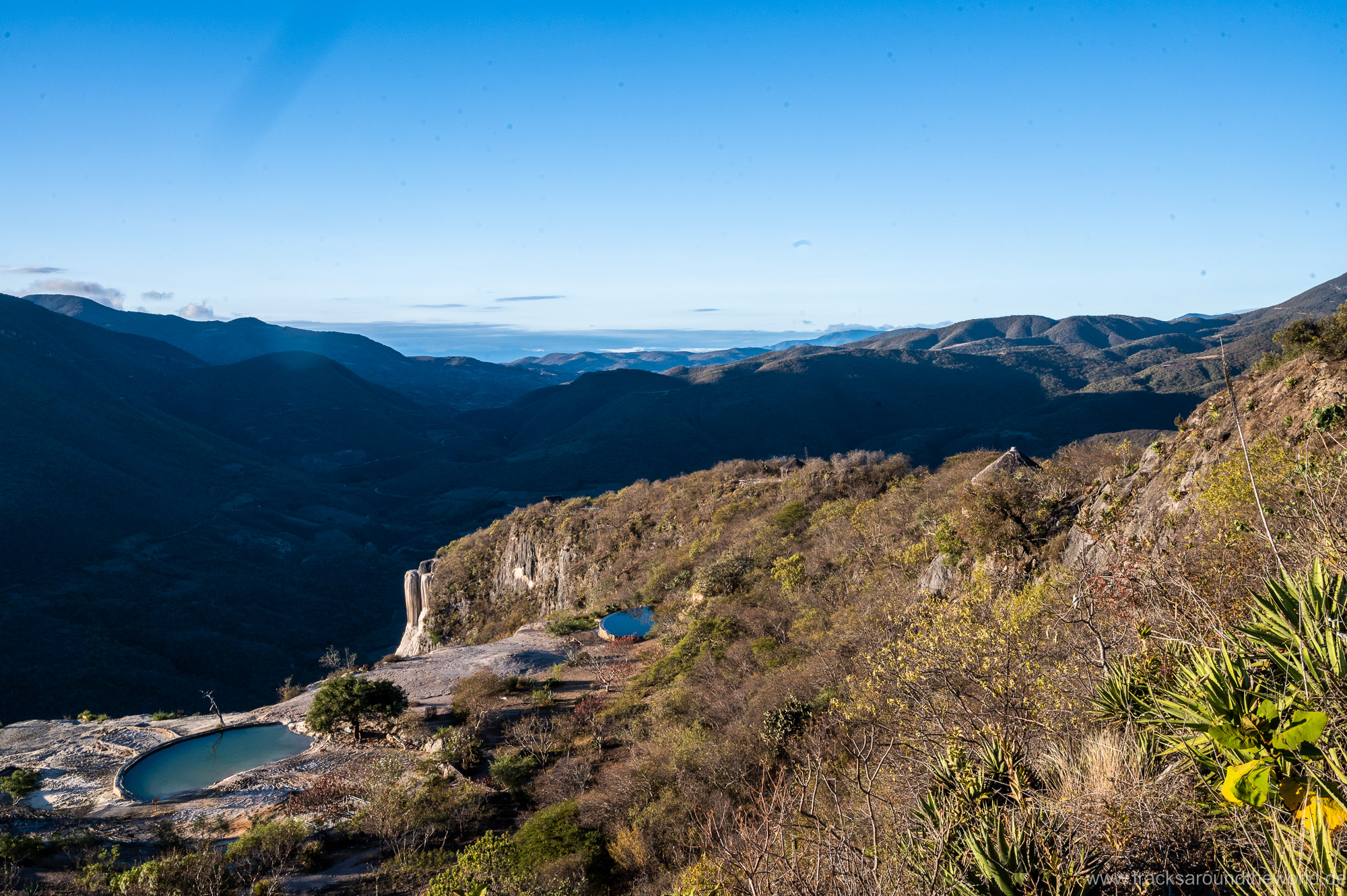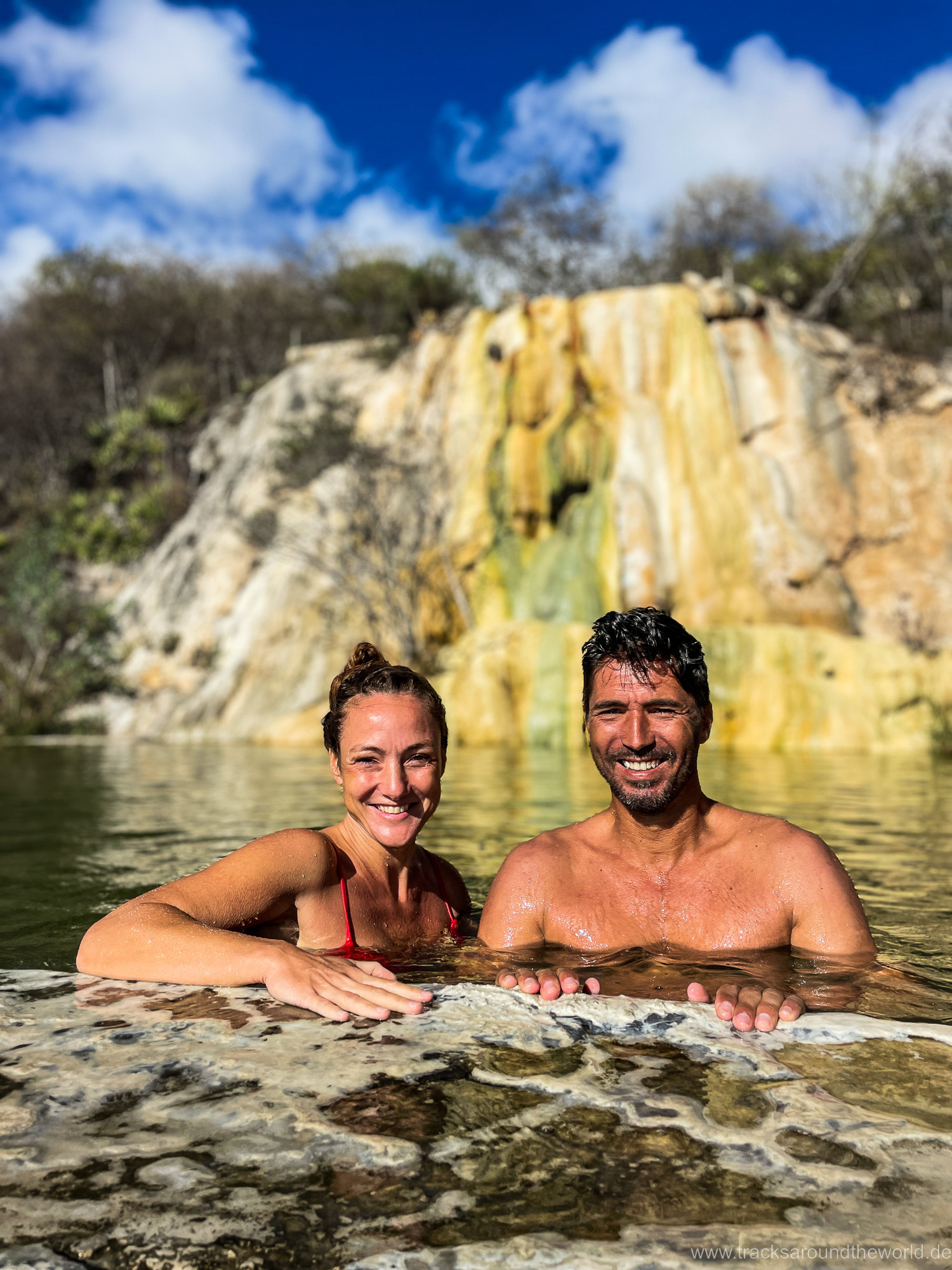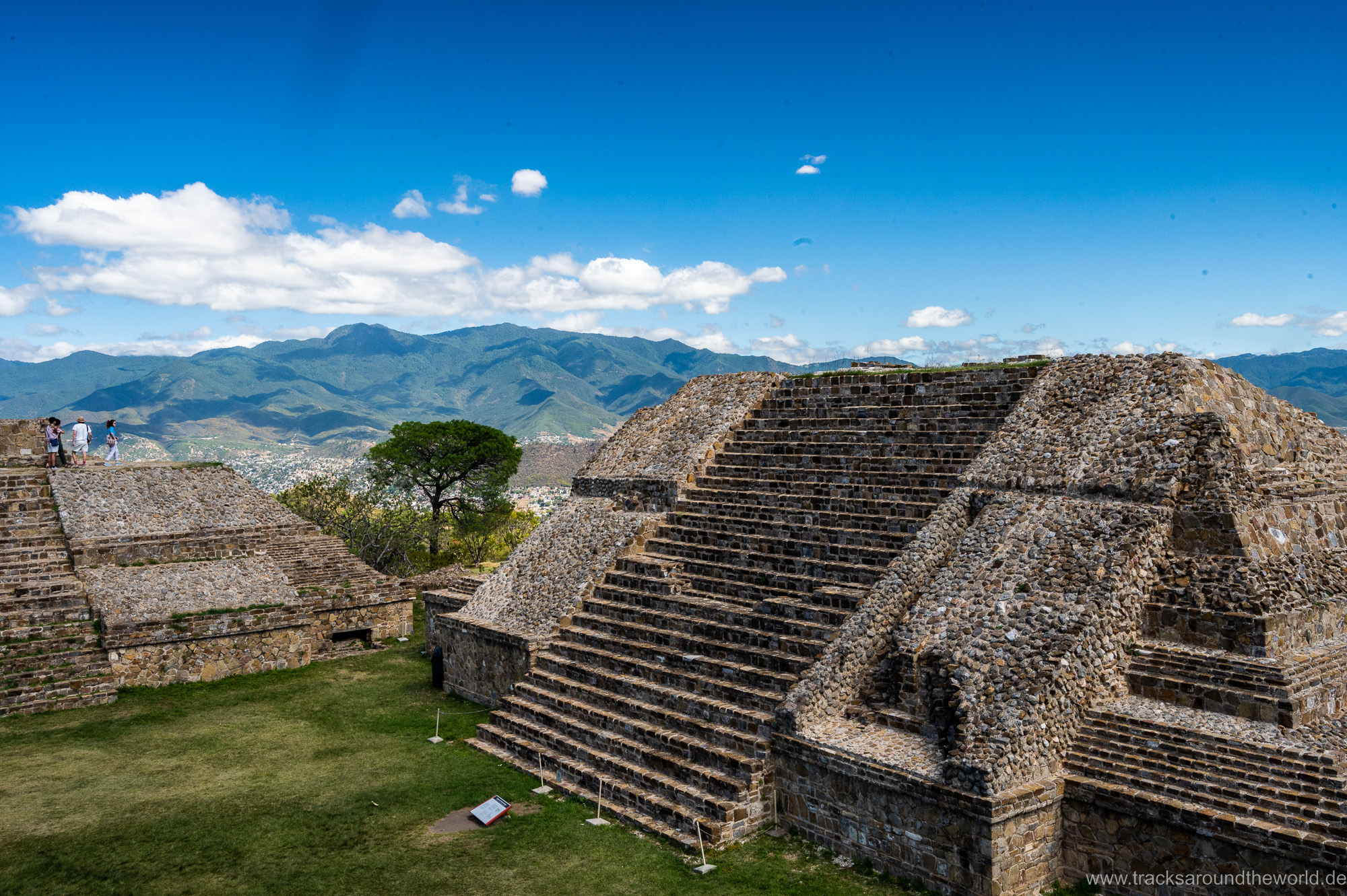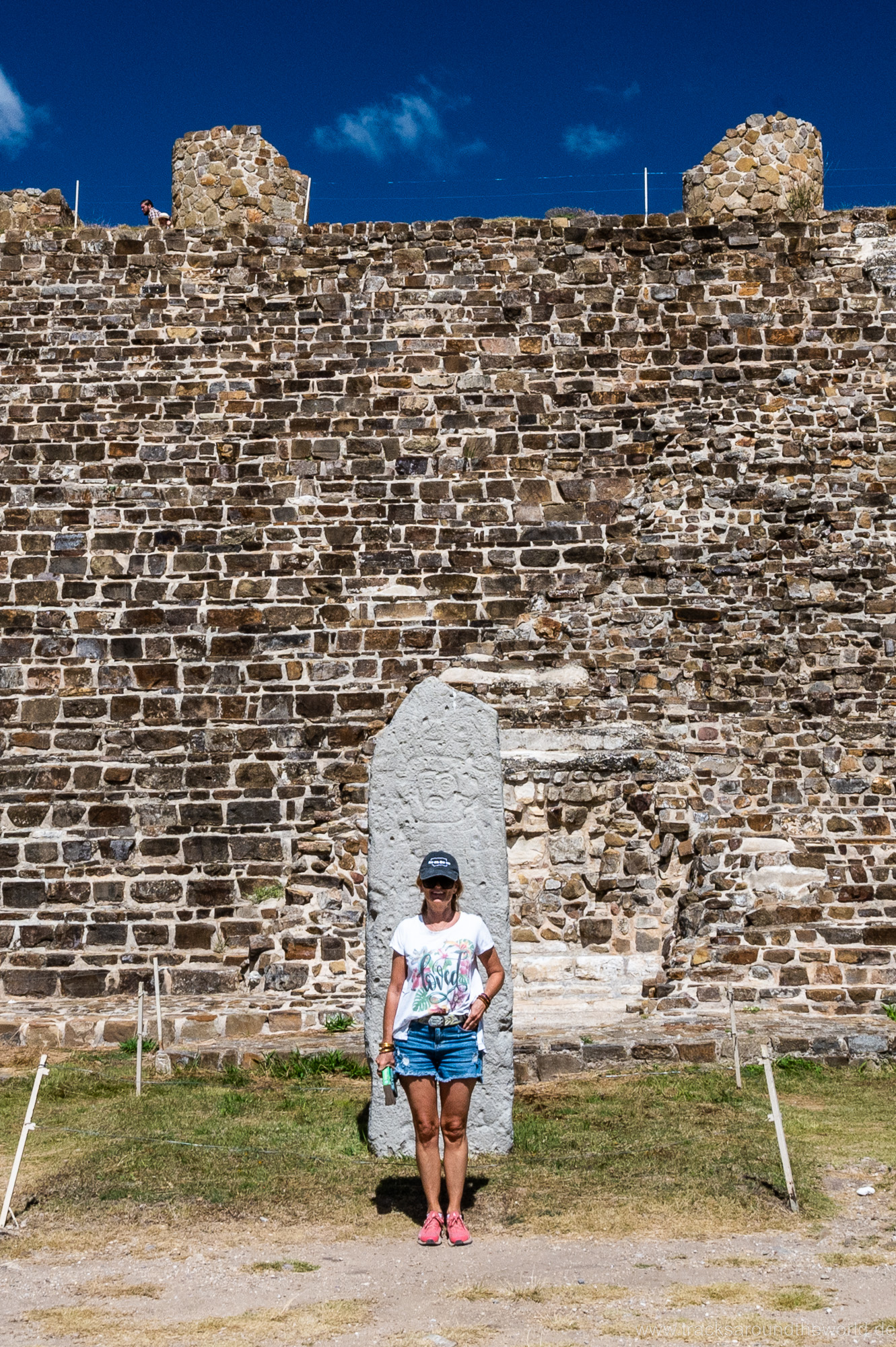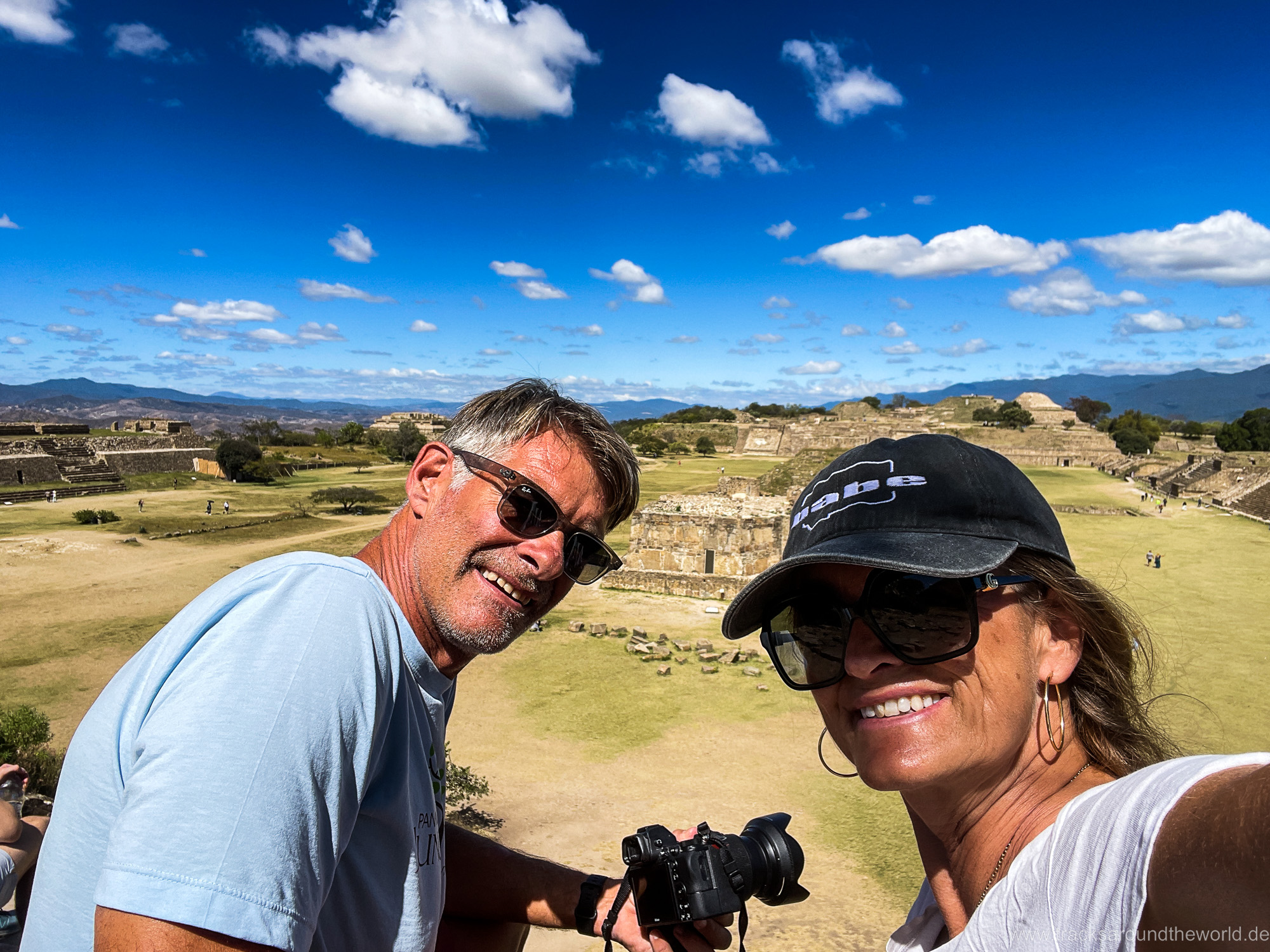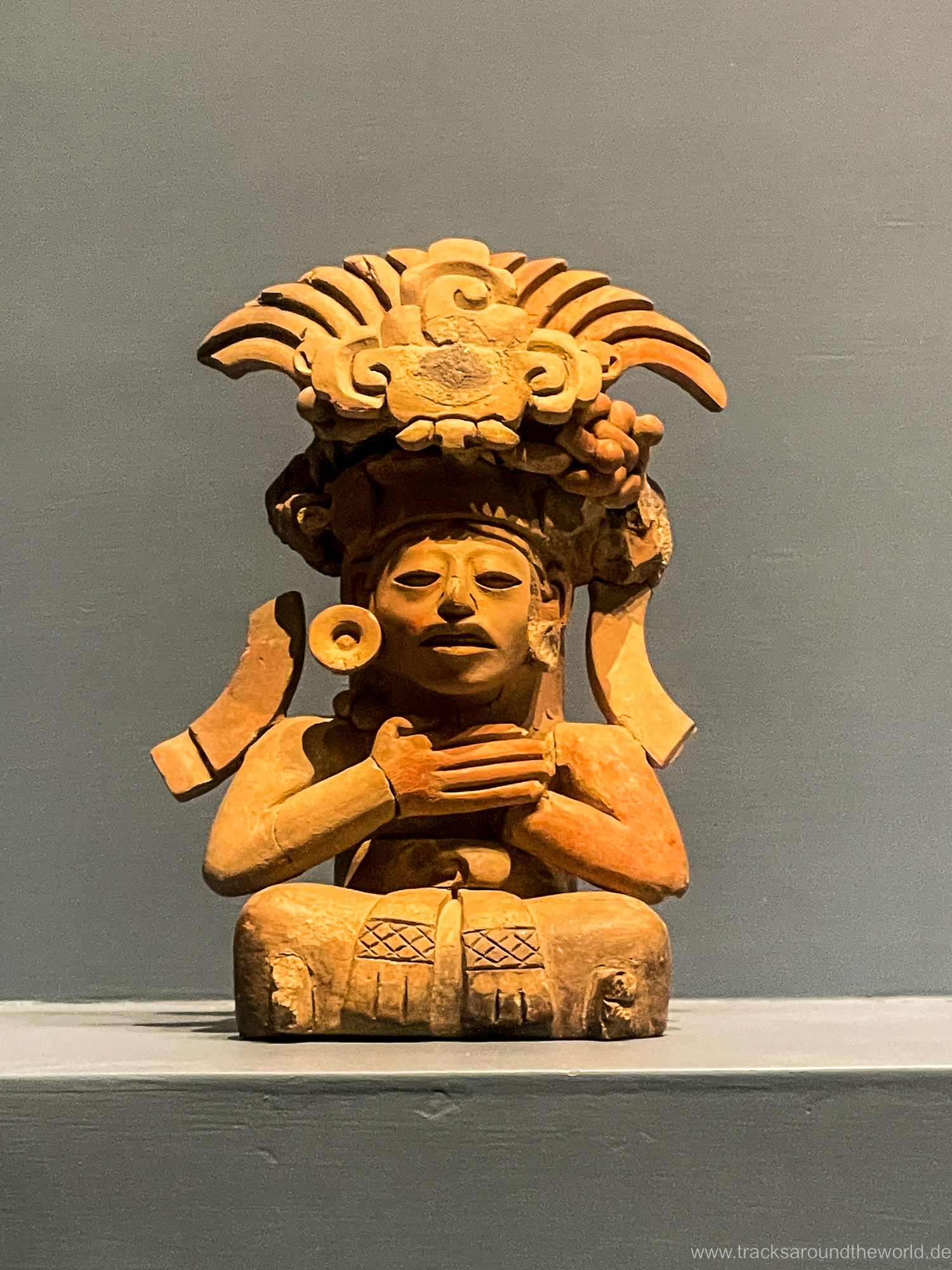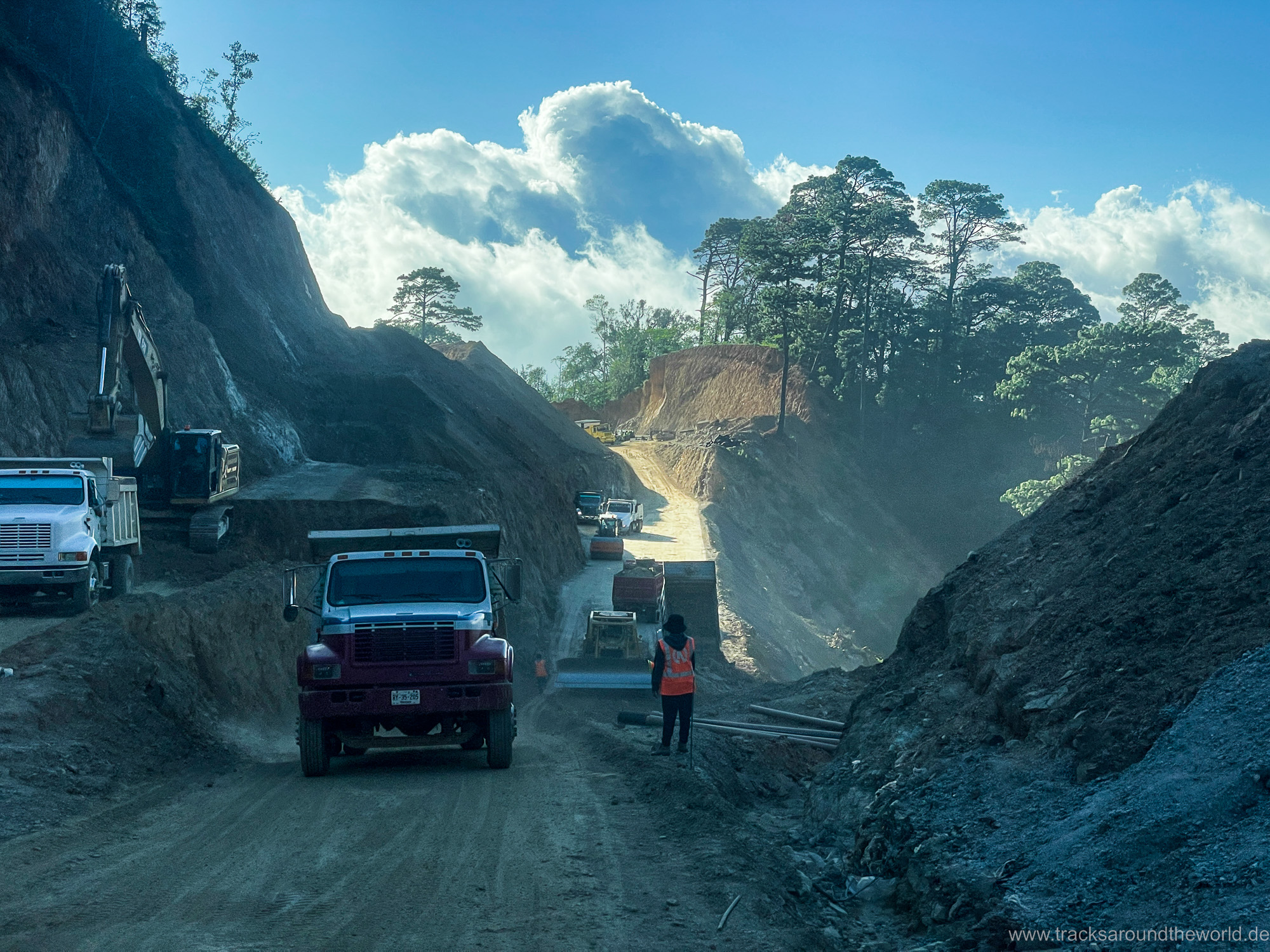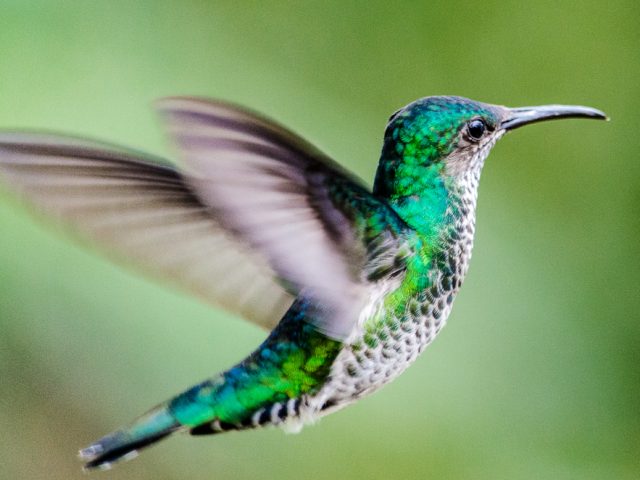With the intense impressions of the “Dias de los Muertos” we drive towards Mexico City… with 22 million inhabitants, one of the largest metropolitan regions in the world. But before we are heading towards downtown, we stop at the famous pyramids of Teotihuacan in the northeast of the city. The north-south axis of the area is an impressive 3 km long (so we have a lot to walk) and the Sun and Moon Pyramids, at 65 and 45 meters high respectively, are among the largest in the world. The heyday of the city, which had 100-150,000 inhabitants at the time, was between 200-600 AD and – like many other cities such as Machu Picchu or Easter Island – its sudden decline has not been clarified to this day. One suspects a combination of social/economic factors and natural forces (possibly a volcanic eruption… Popokatepetl is not that far away).
Then we head towards Mexico City downtown: deliberately on a Sunday morning (because of traffic and the extensive driving ban restrictions for vehicles without a Mexican environmental label). After a short discussion with the parking staff, we and Shujaa were allowed to park for three days and nights in the centrally located Chapultepec Park, which is very quiet for a city of this size and, above all, well-guarded. With peace of mind we set off for sightseeing: the following three days are strenuous and intense… from the former headquarters of the Aztecs to many churches and different city districts to the chic high-society districts, there is a lot to explore! A fascinating city that once again reinforces the fact that without seeing the capital, you have only explored half of a country.
Stressed by the heavy traffic, truck driving ban zones and low, unannounced bridges, we leave the capital and head towards nature: the national park in the neighborhood of the big city with the two volcanoes Popocatepetl in the south and Iztaccihuatl in the north. With an overnight stay at the Paso Cortez at an altitude of 3,700 meters, we have reached by far the highest point on our North/Central America trip so far, but it is still green here and we are still a good 300 meters below the tree line. It snows on the mountains at night, so when the sky is clear the next morning we have a gigantic view of the smoking and still quite active Popo (which is why it is still not allowed to be climbed).
With the cities of Cholula and Puebla we see once again beautiful colonial splendor – in Puebla also decorated with the tiles found on many buildings there, like those produced in Talavera in Spain and which made Puebla rich in the past centuries. A great city that now benefits from Volkswagen’s second largest factory in the world.
In Oaxaca we finally arrive in the “wild south” of Mexico. The city is once again beautiful with a lot of preserved colonial buildings, countless churches and monasteries and a very relaxed and chilled atmosphere. For three nights we are at a campground a little outside with a green meadow (great for sports or yoga) and a pool and meet various other overlanders there, some of them have made very moving and impressive experiences. A little socializing is good for us from time to time, before we head to the natural limestone terrace pools of Hierve de Agua. Fortunately, it’s not nearly as touristy as the better-known Grutas de Tolantongo, which we visited a few weeks ago, but still beautiful… especially because of the location in a fantastic mountain setting with an overnight parking space directly above the terraces.
Back to Oaxaca and before we finally leave the historic colonial highlands towards the tropical Pacific coast, we visit Monte Alban. The Zapotecs built their most important cultural site more than 2,500 years ago on a mountain plateau at 1,950 meters with a great view over Oaxaca. On the “plateau above the clouds” they built temples, palaces and pyramids for their gods, which took centuries to build. Monte Alban has been perfectly preserved because it was overlooked by the Spanish invaders and thus did not suffer destruction. We are impressed by the dimensions of the facility and the location.
We heard that there was to be a new, almost finished highway from Oaxaca to the Pacific coast, which would significantly shorten the travel time and route through the mountains. A quick research showed that the President will officially inaugurate the highway in six days… it must be almost finished by now… so we thought 😉. Of the 140 km, the first 50 km and the last 50 km were actually completed and perfectly passable with no traffic. We confidently drive past military and police posts who check the beginning and end of the new route to ensure that no unauthorized people drive in here. Not showing any uncertainty and sometimes it has an advantage that Shujaa looks like a large construction site truck from the front. However, the middle section is only in a rudimentary condition: there is no road to be seen and the earthworks have only just begun. Nobody will be driving along here for the opening ceremonies in six days (that’s just politics!) and so, since turning back is not an option for us, we have to find our way through deep earthworks and past many construction site vehicles. Exhausted but still satisfied, we reach the Pacific.


